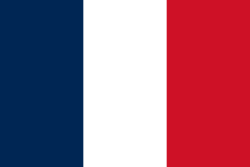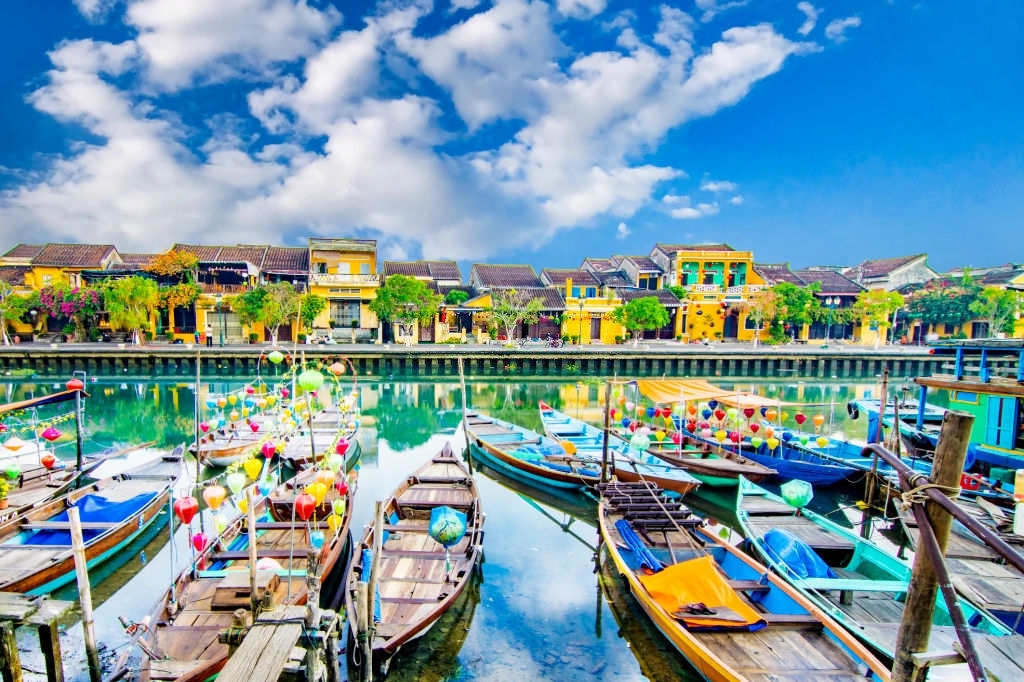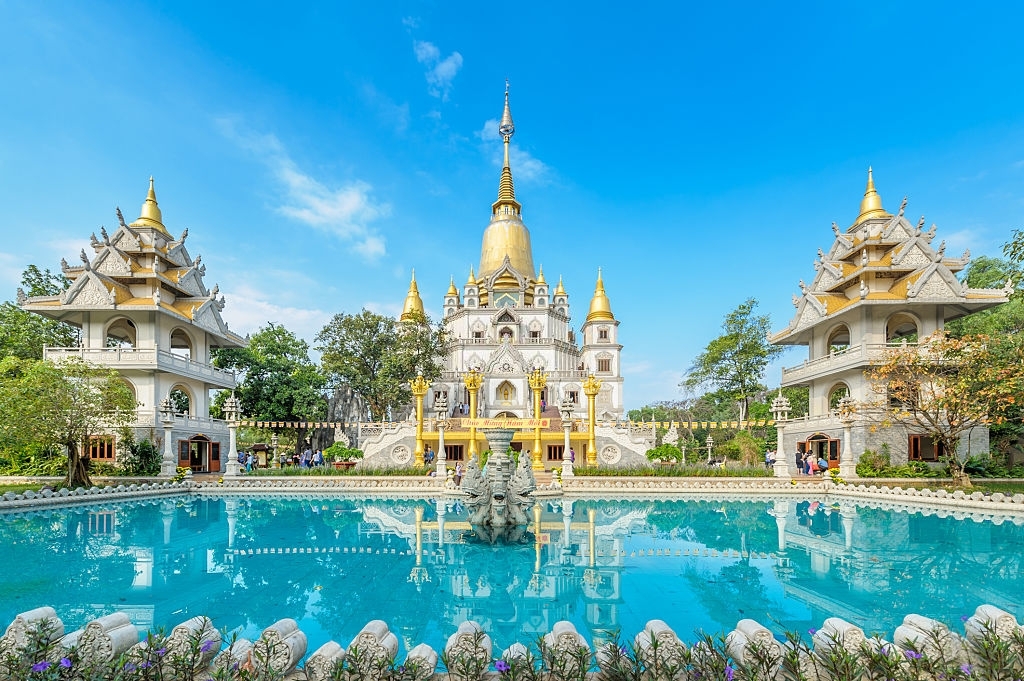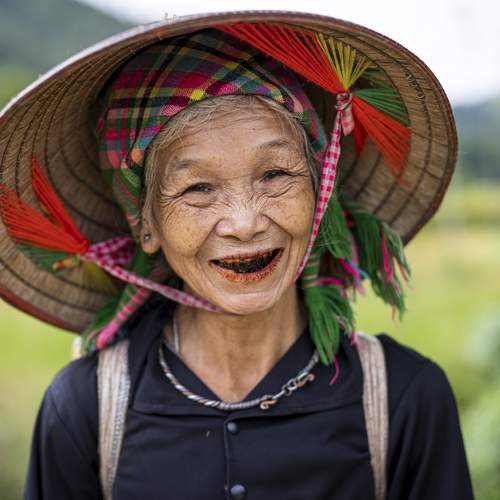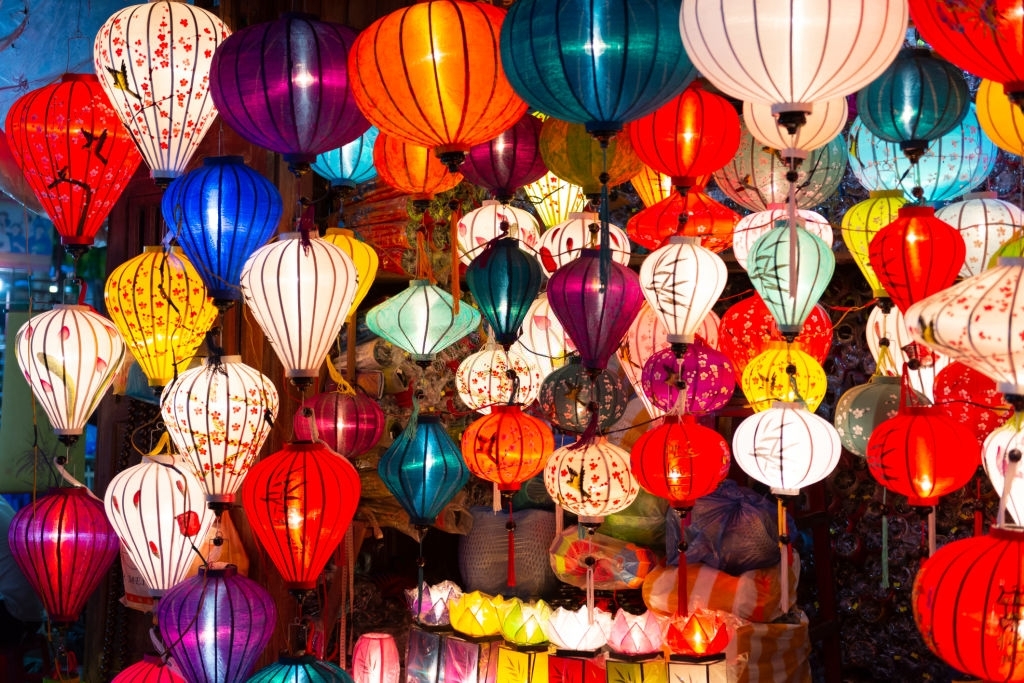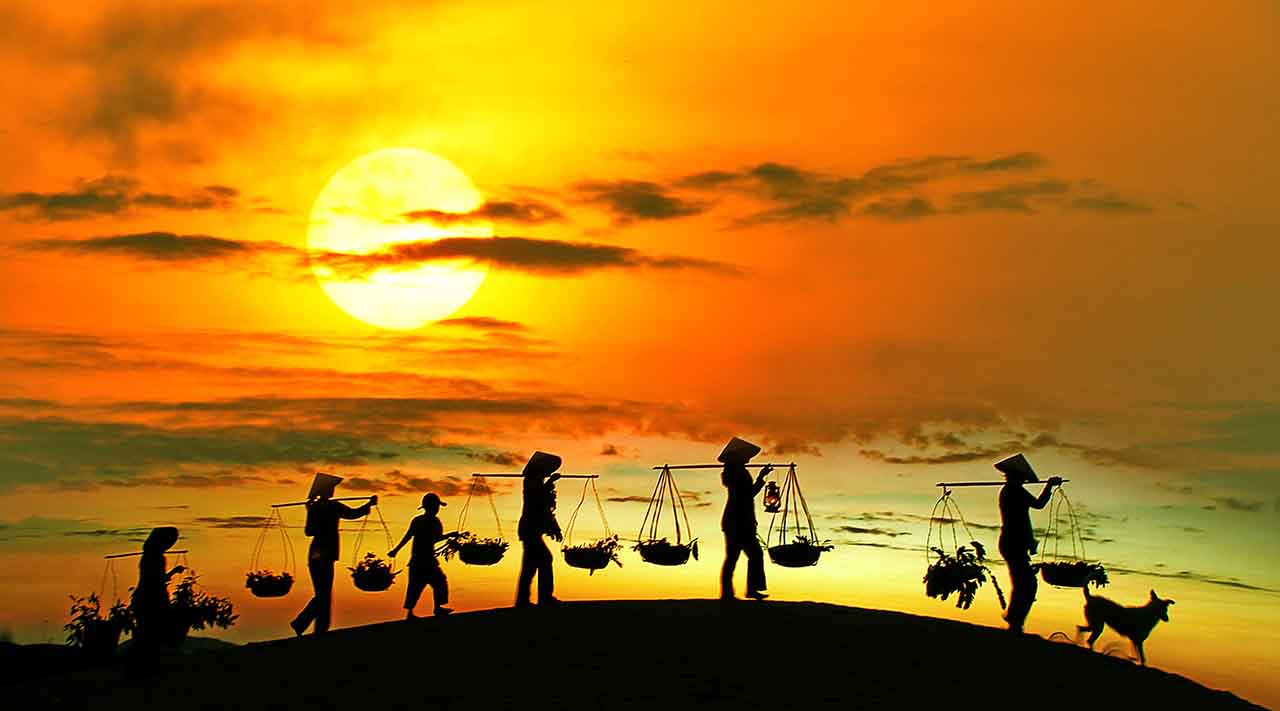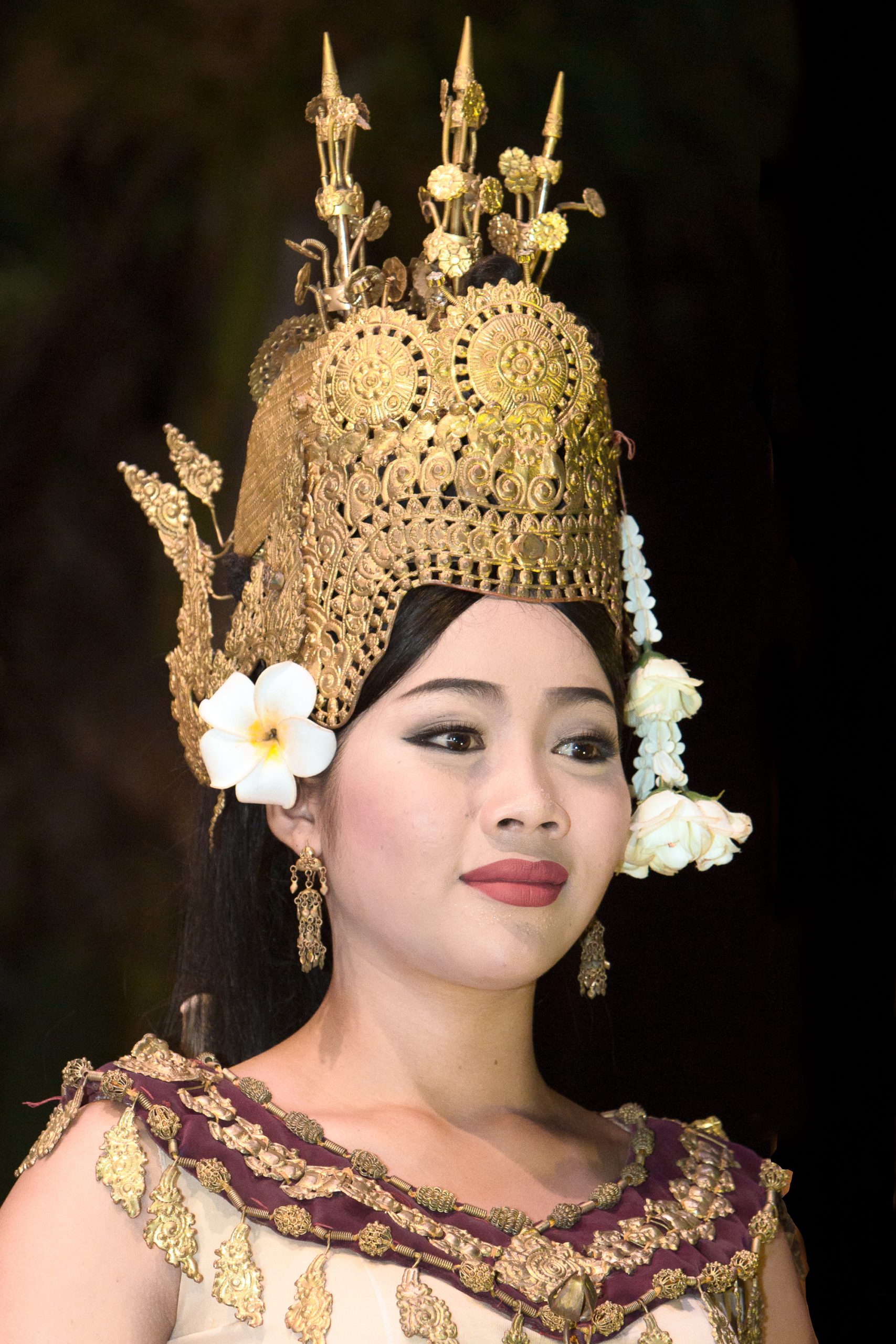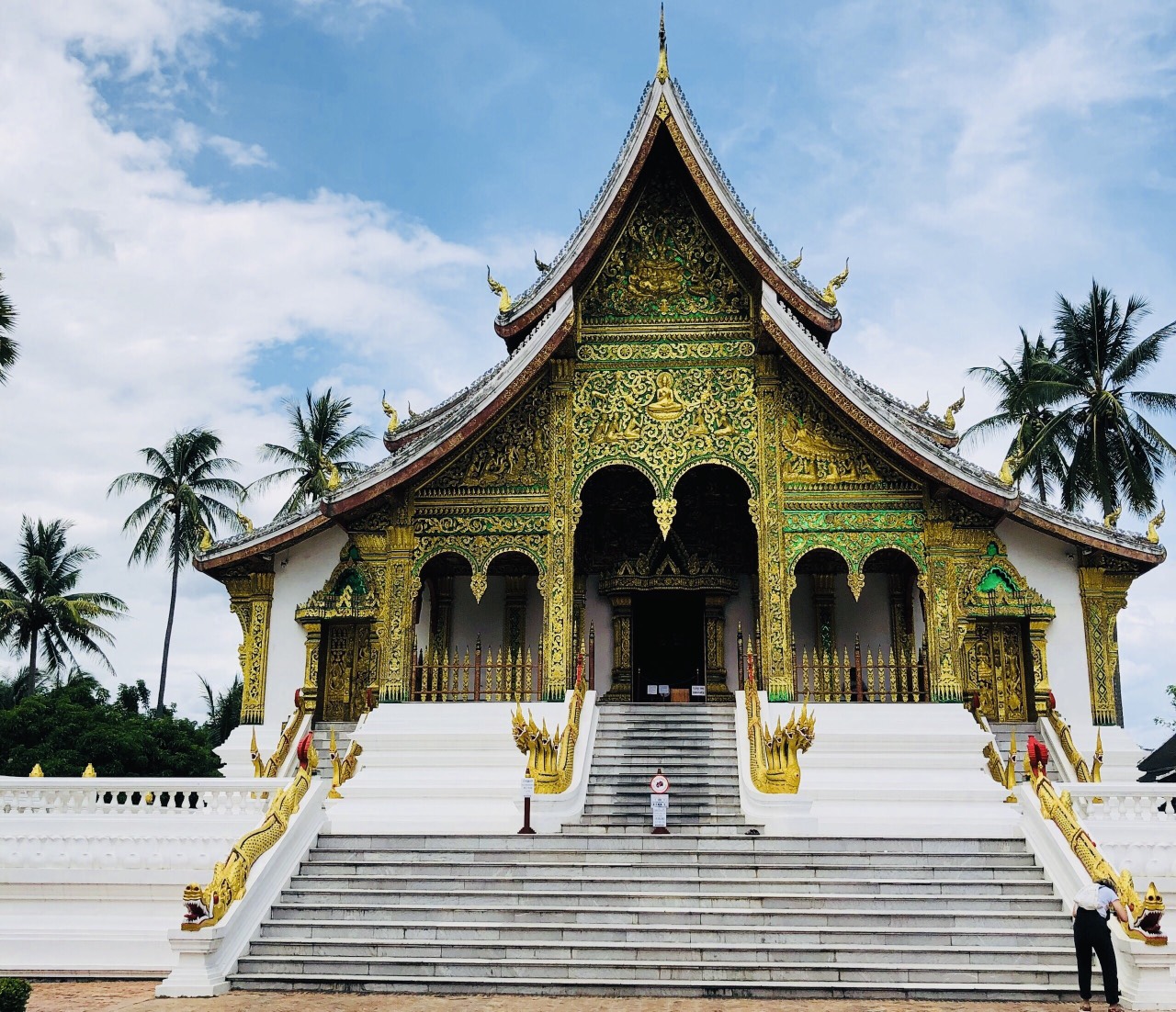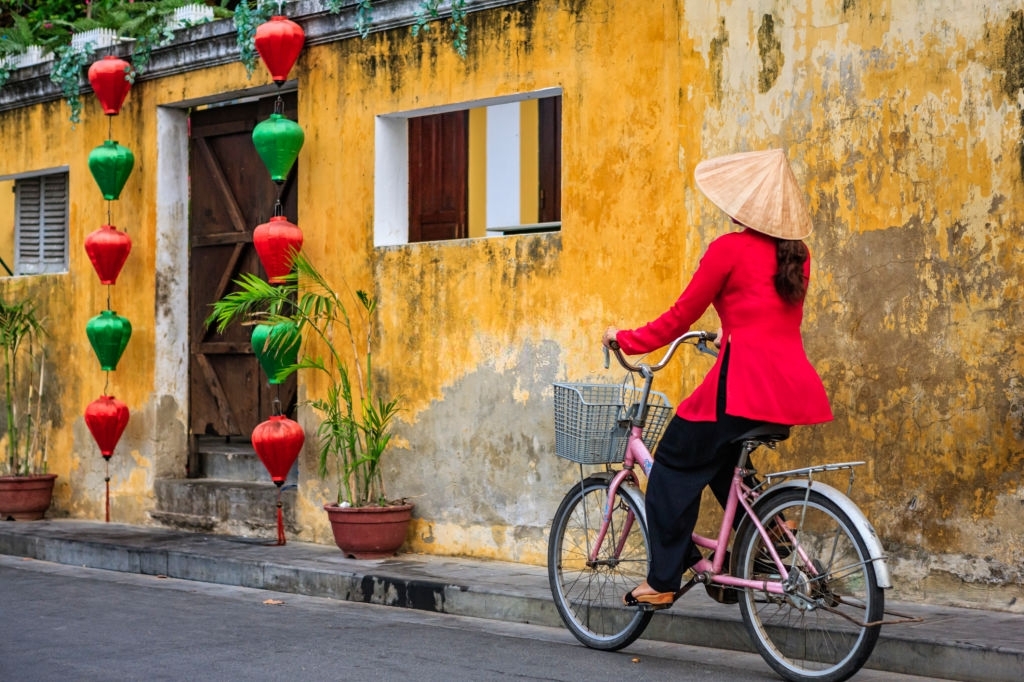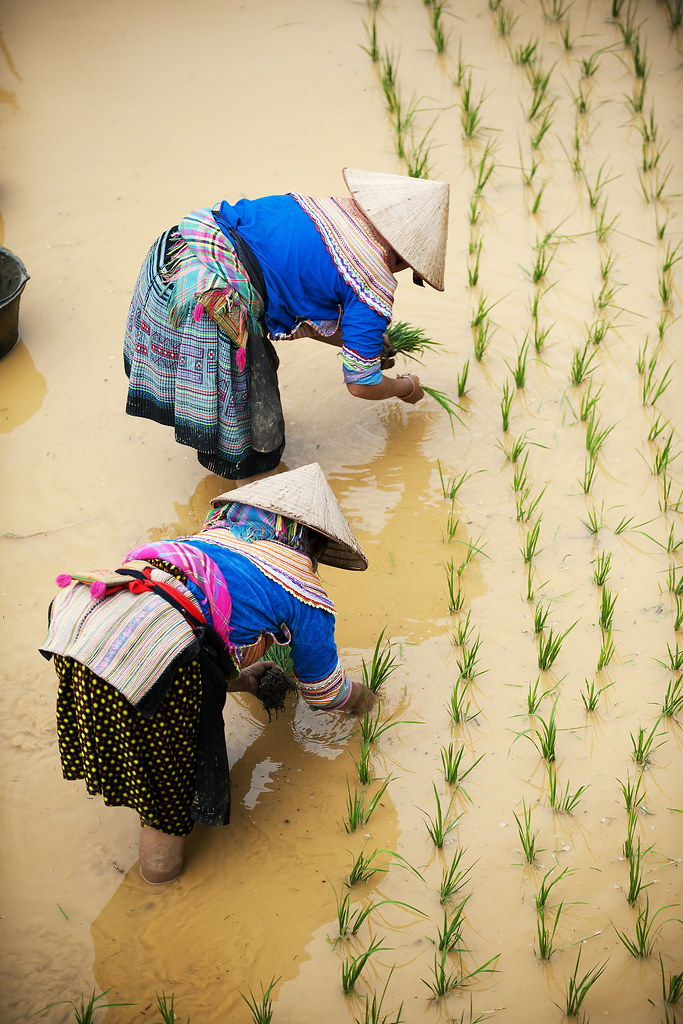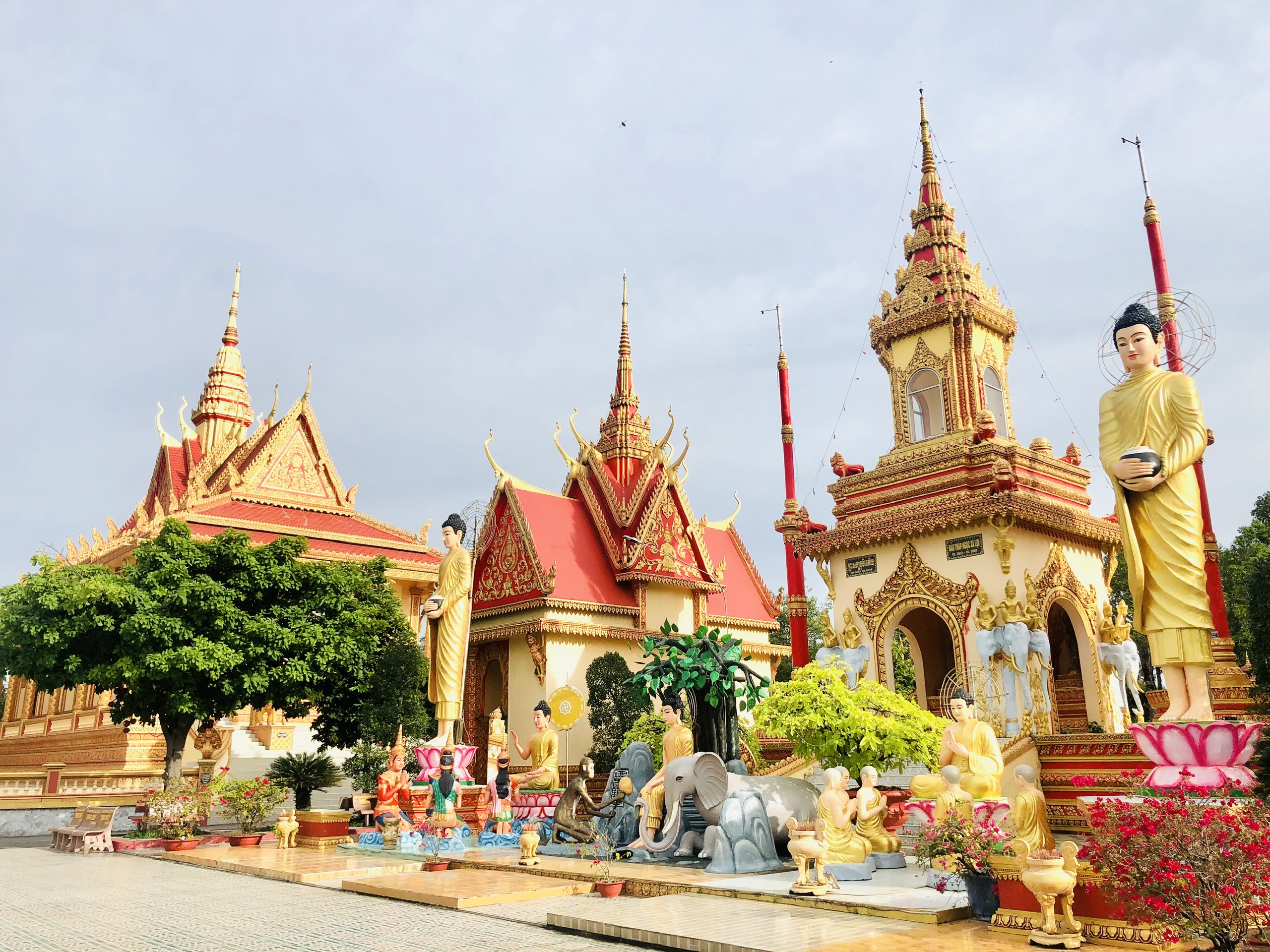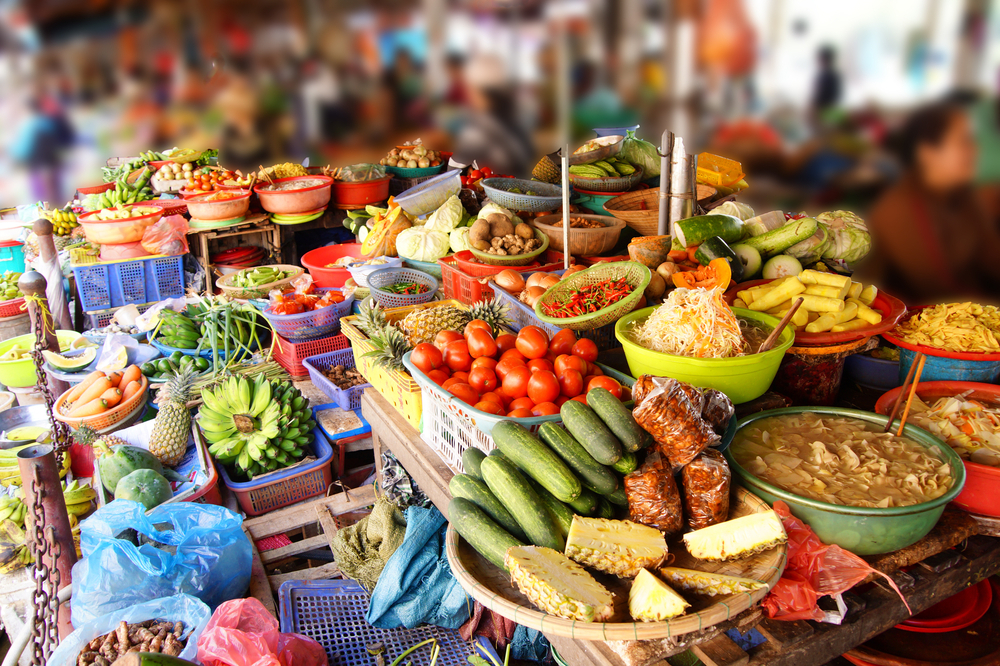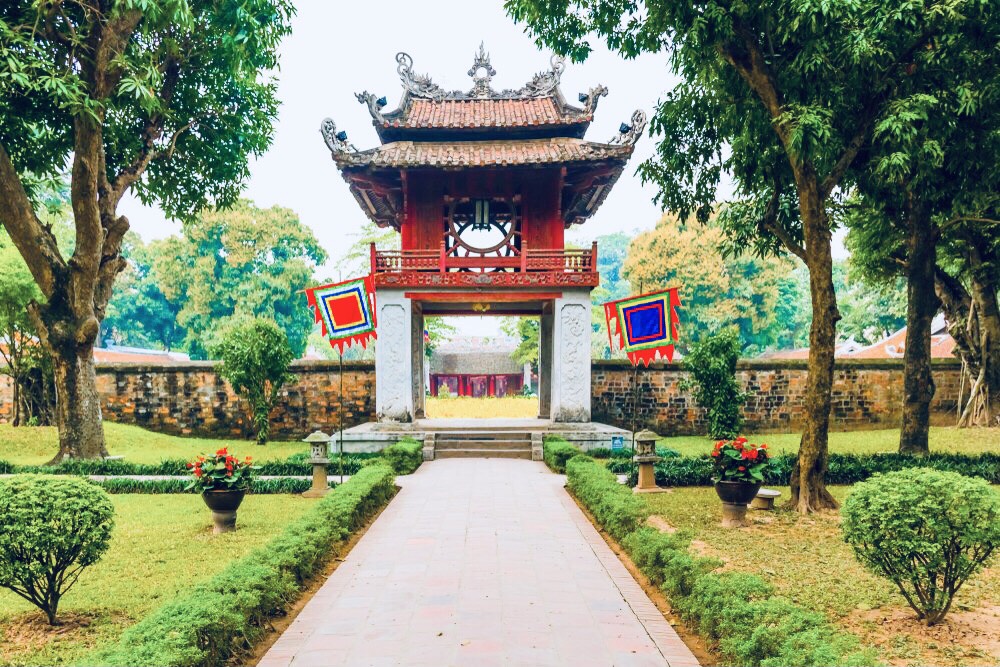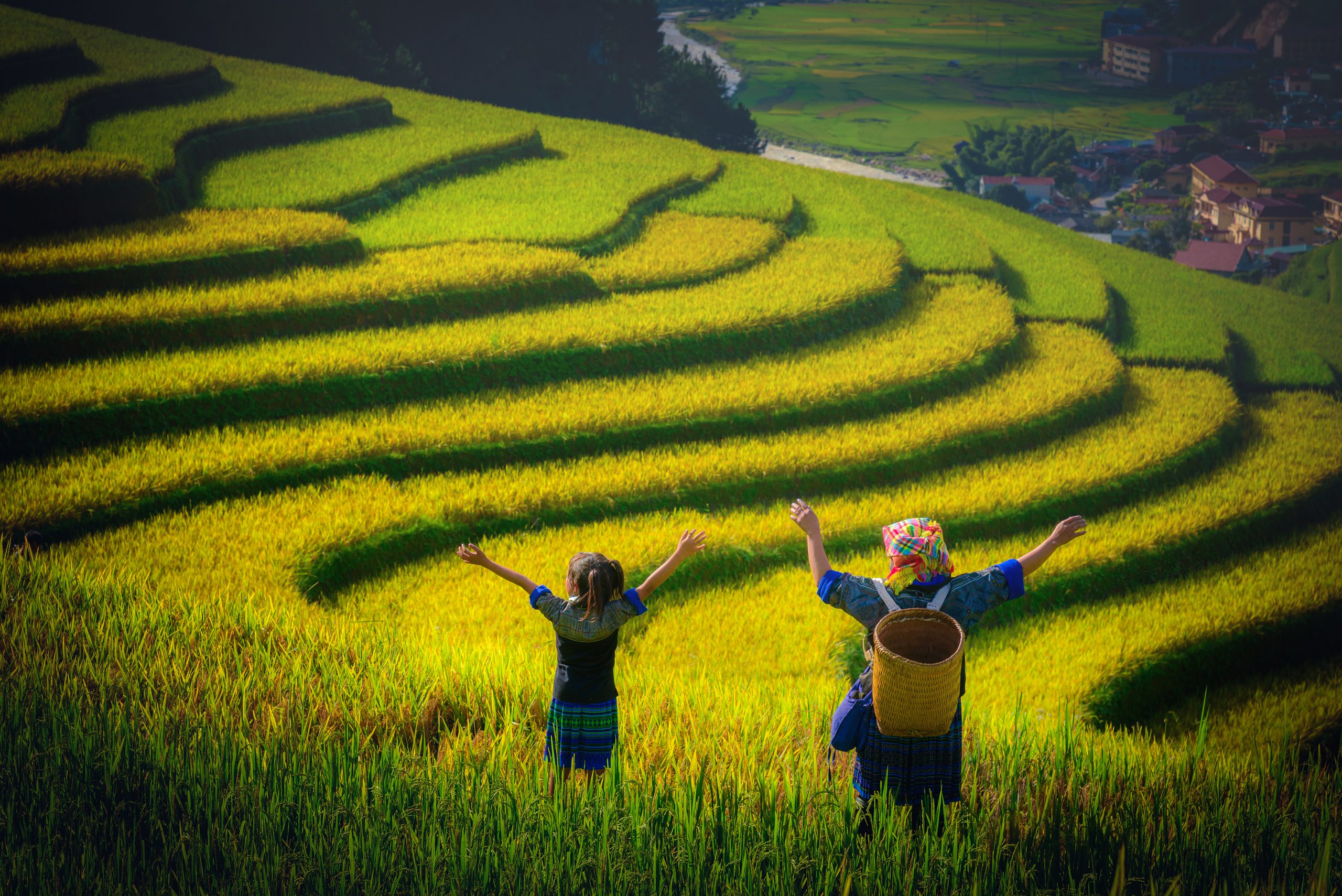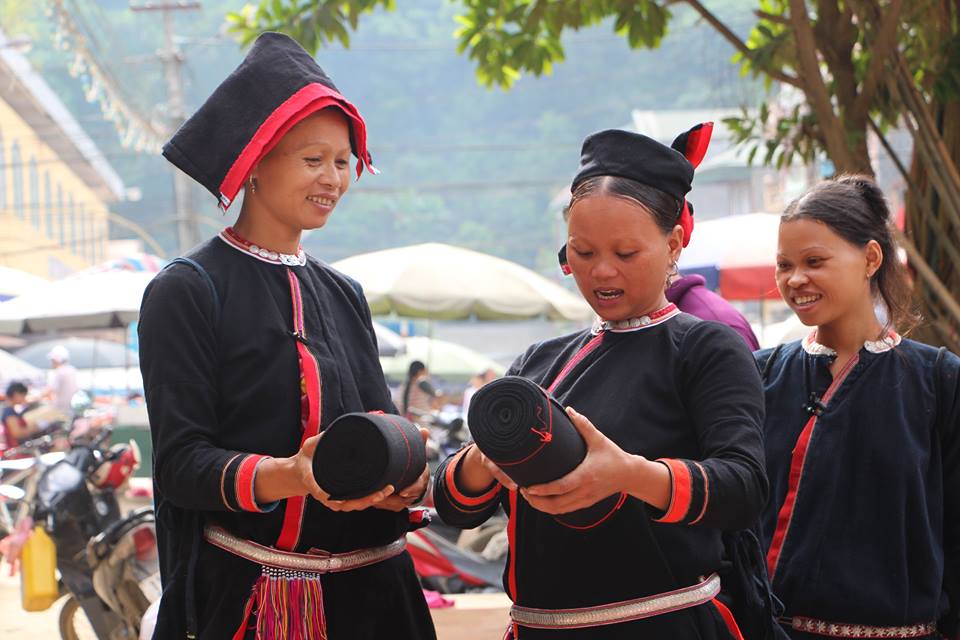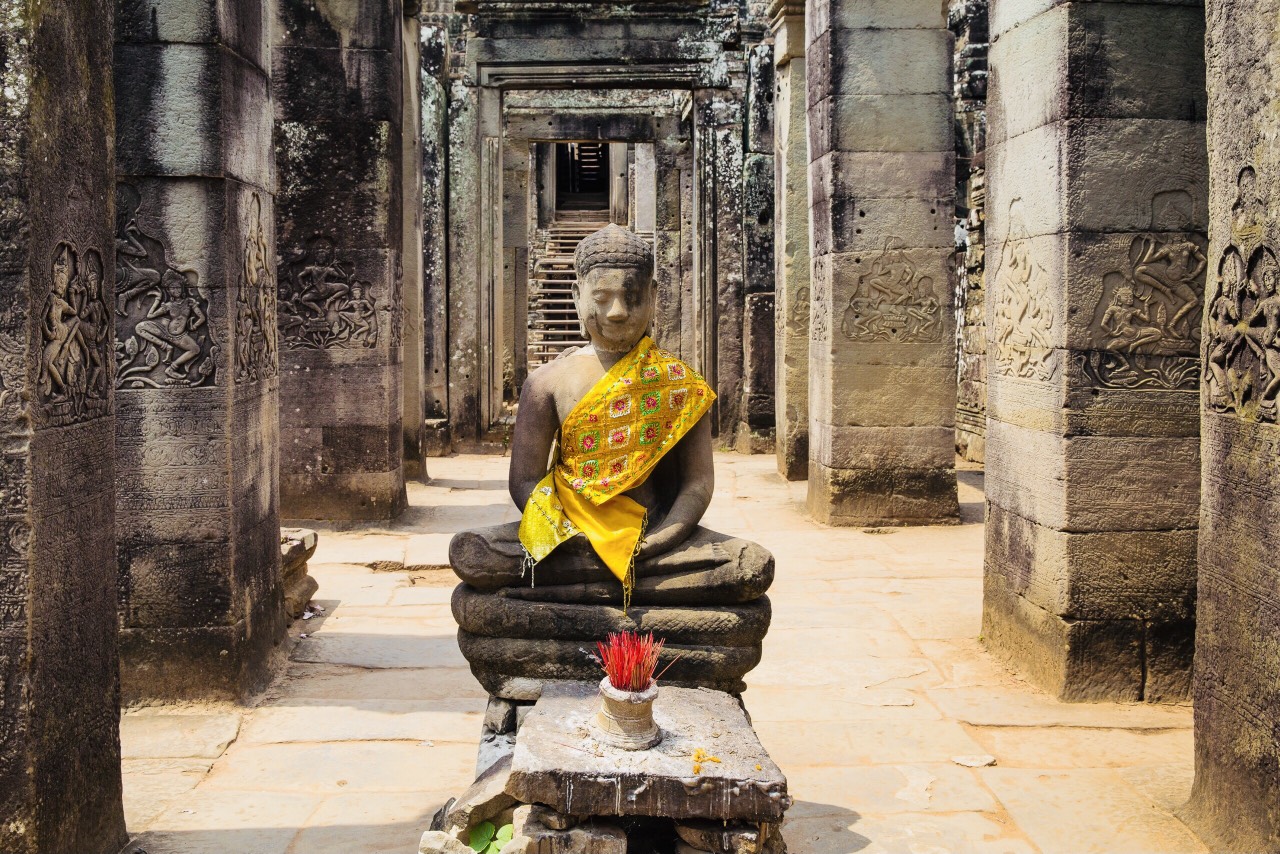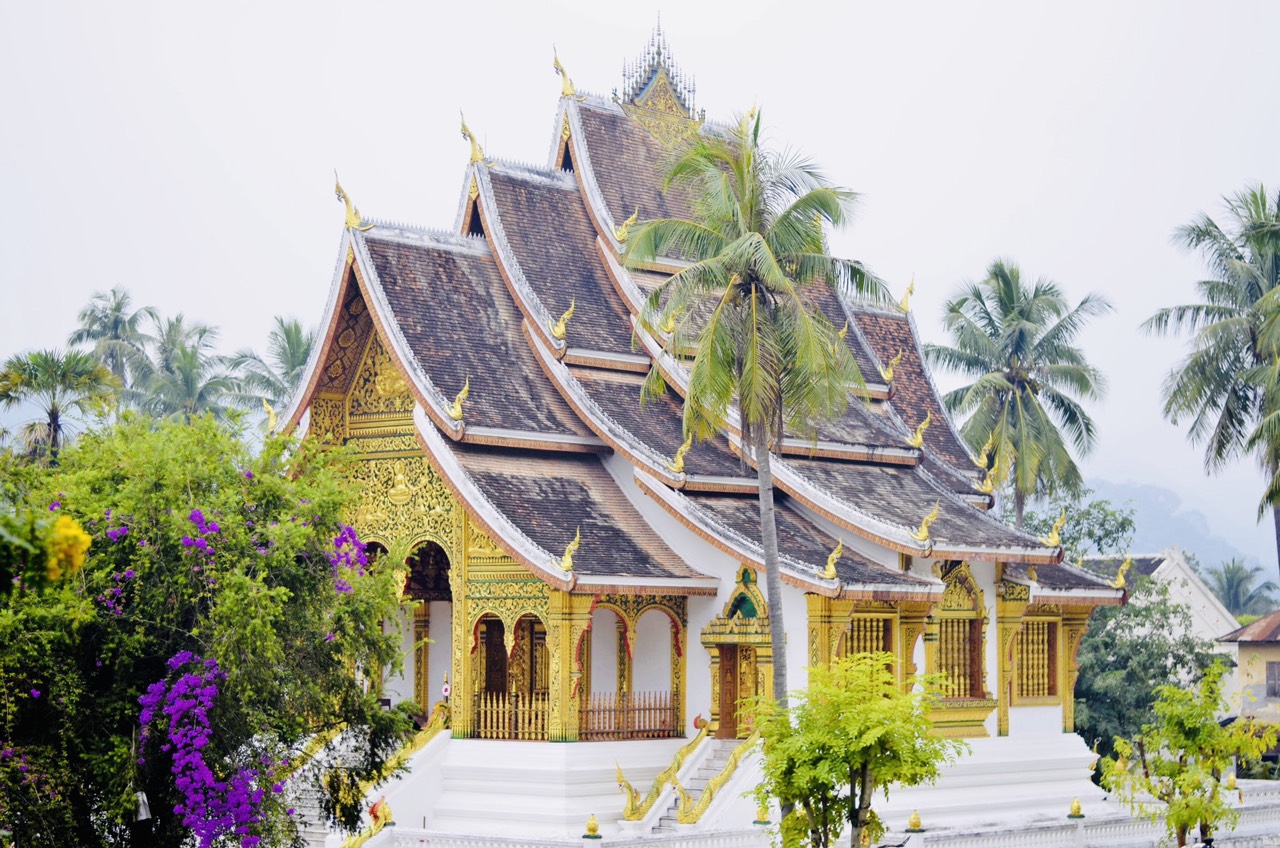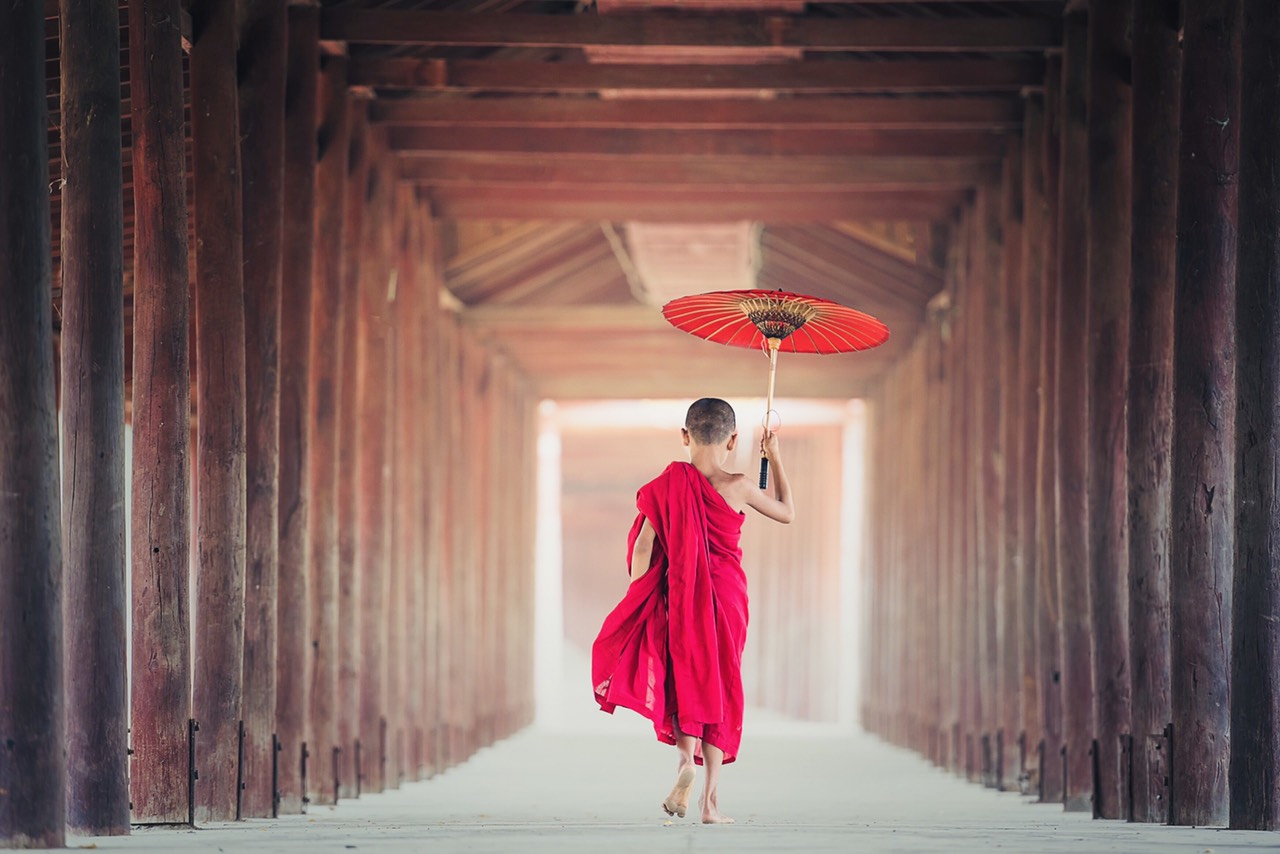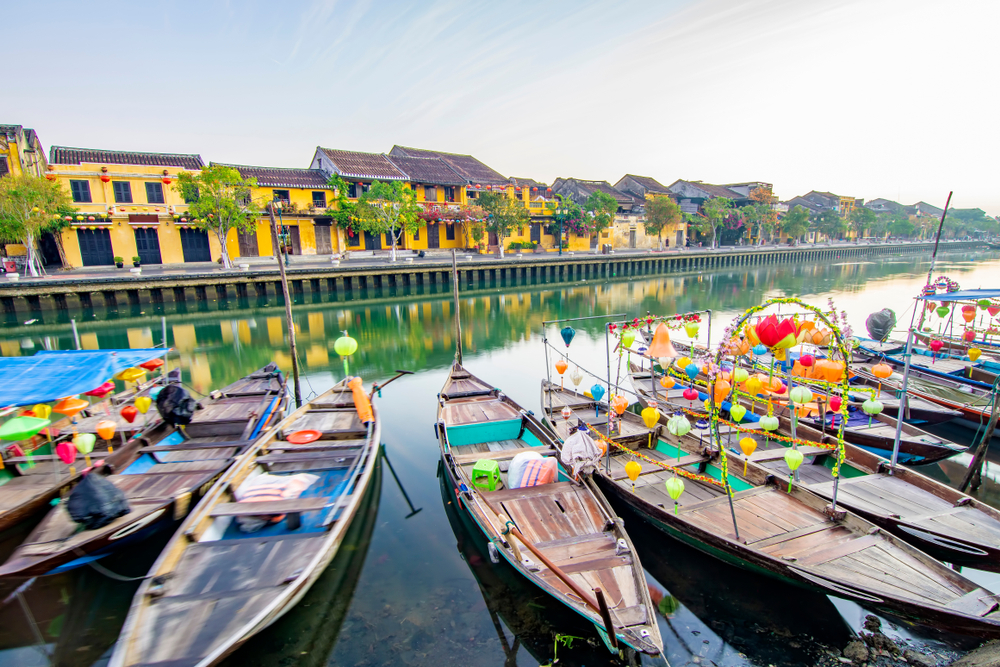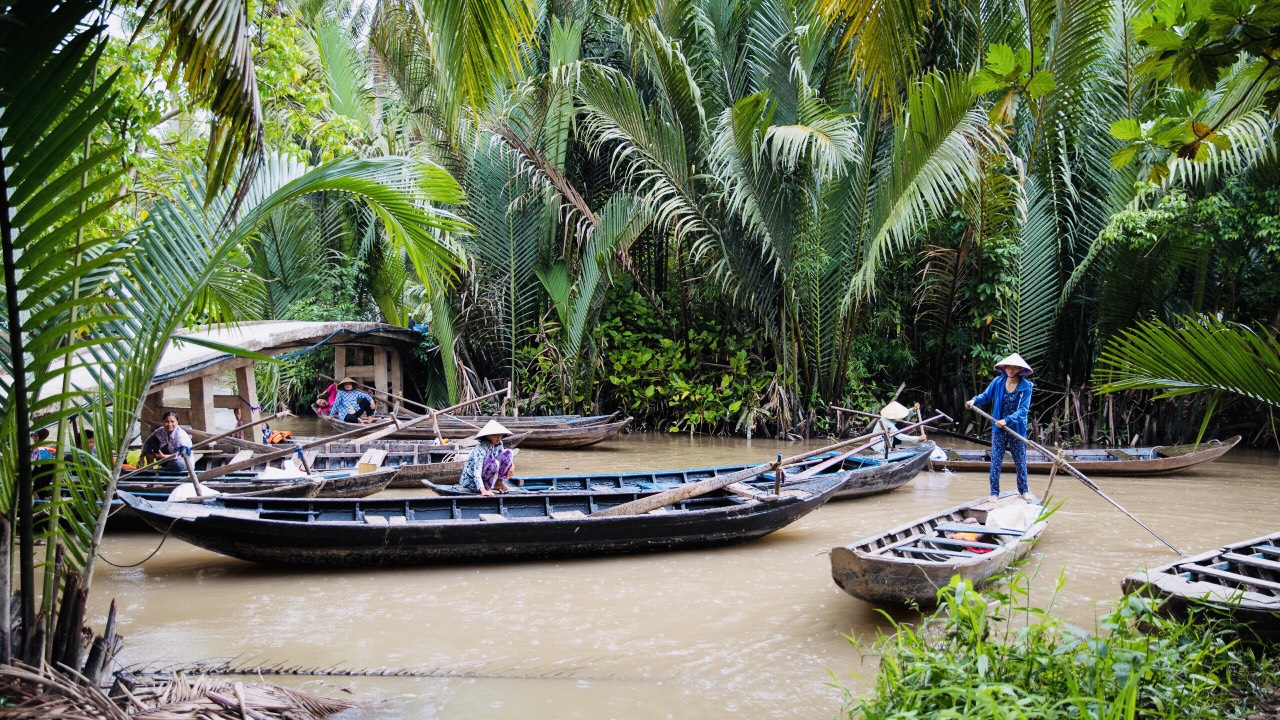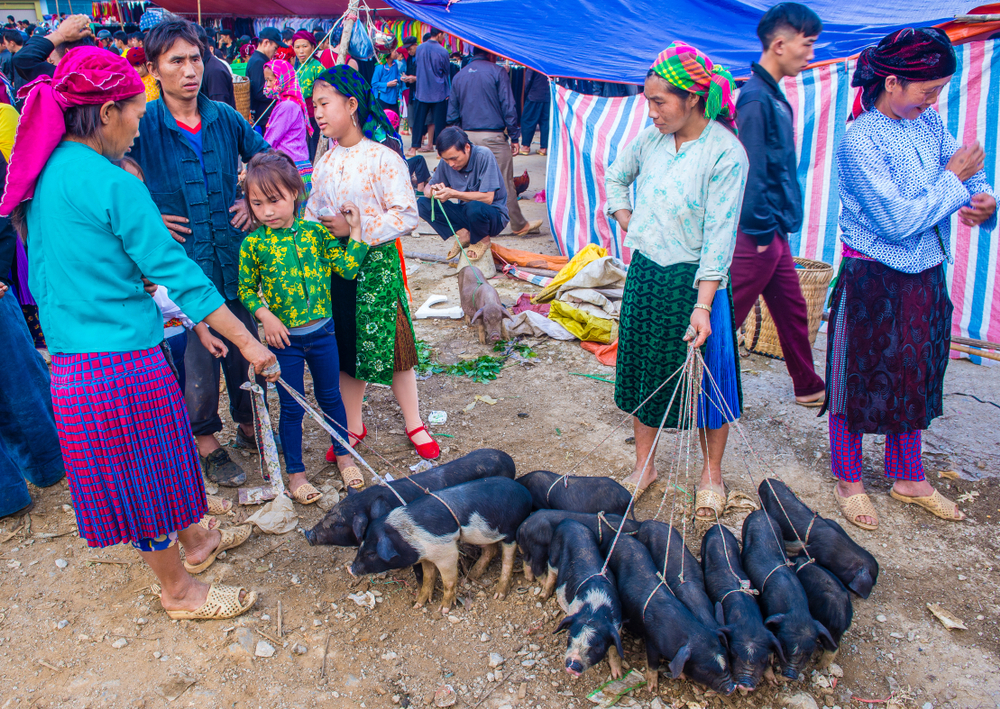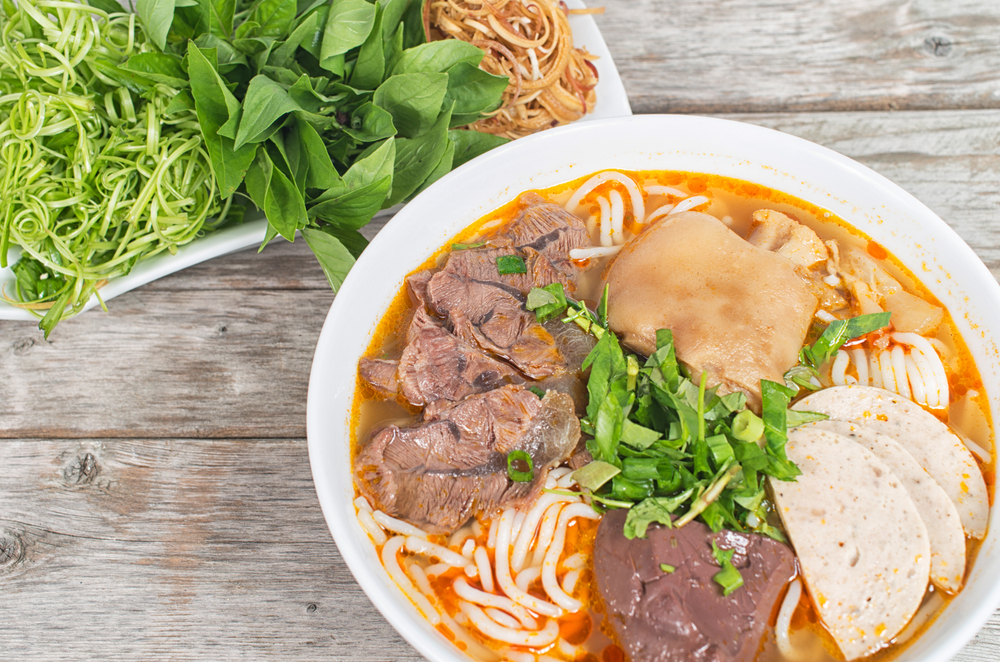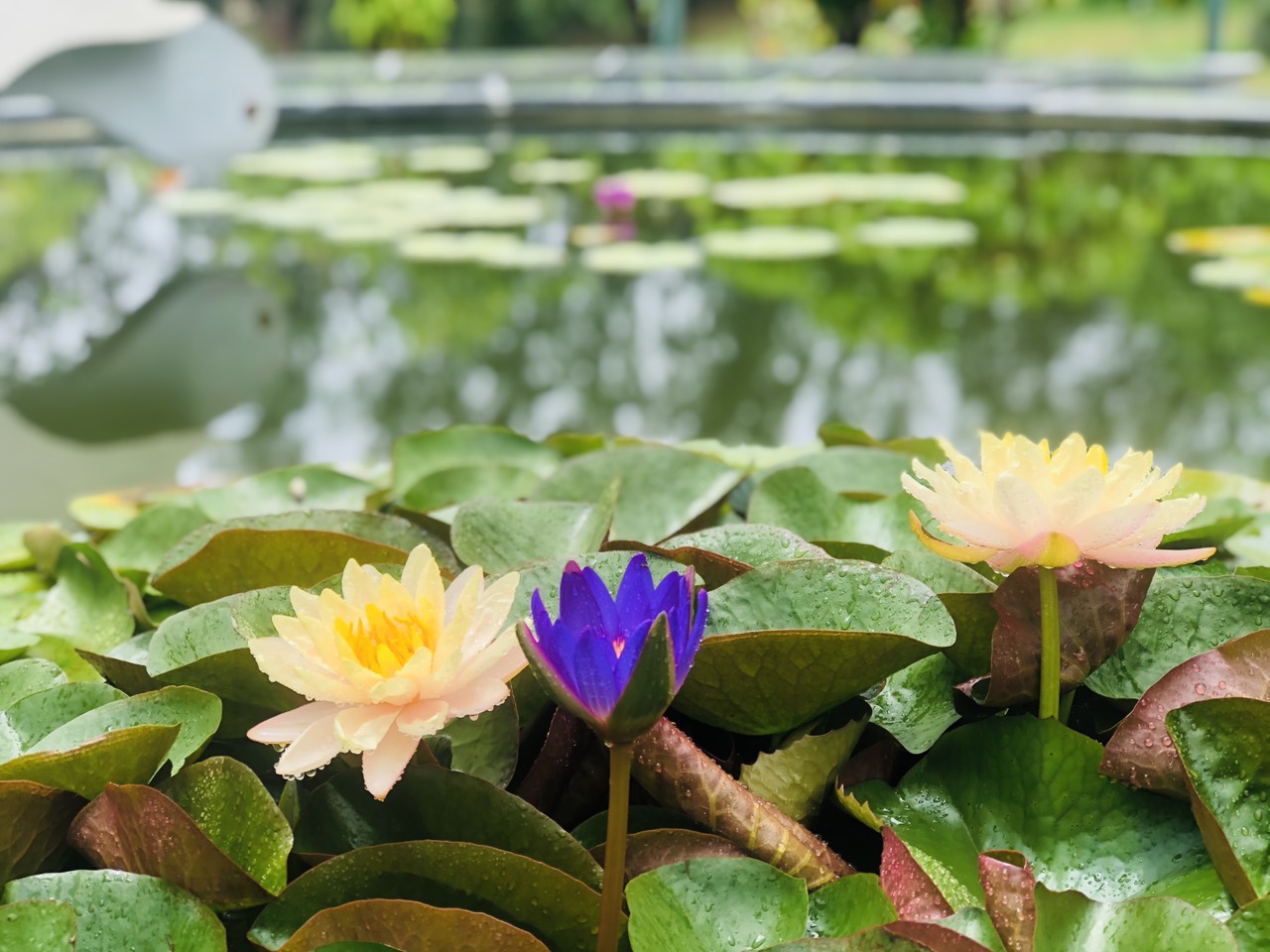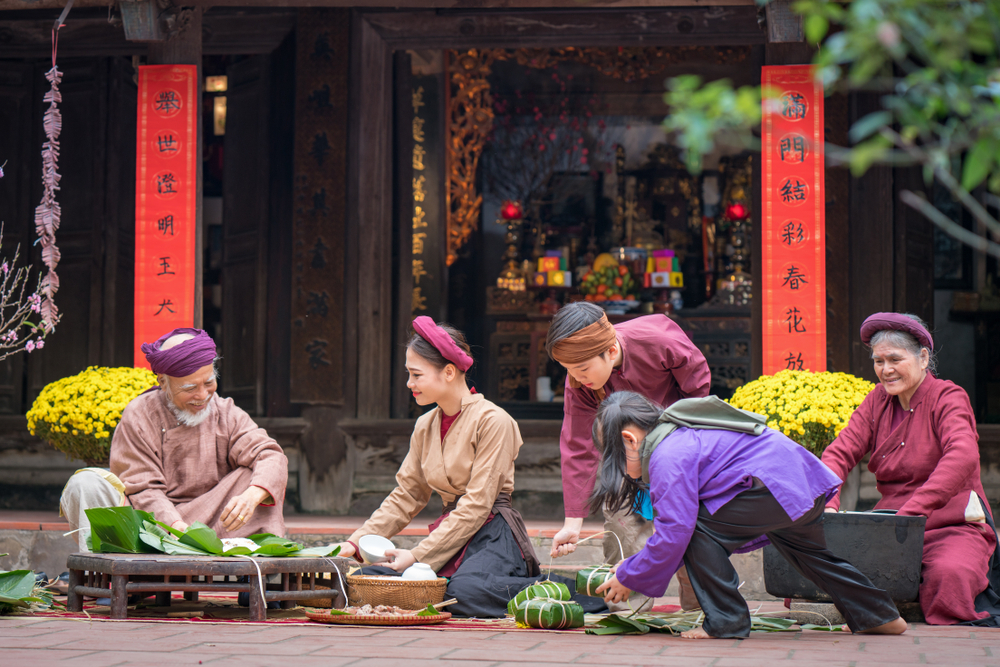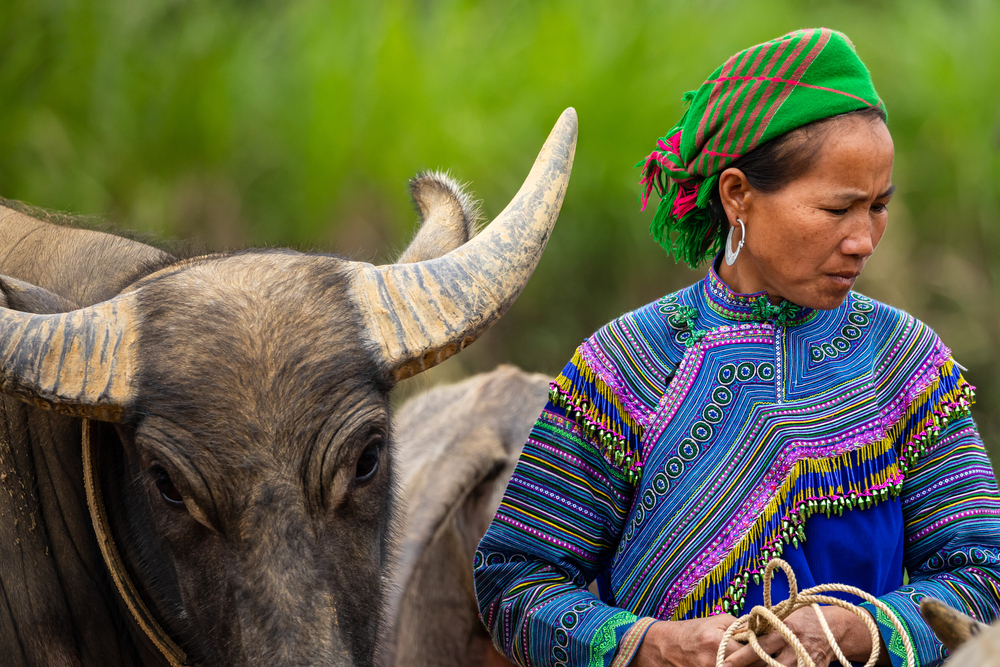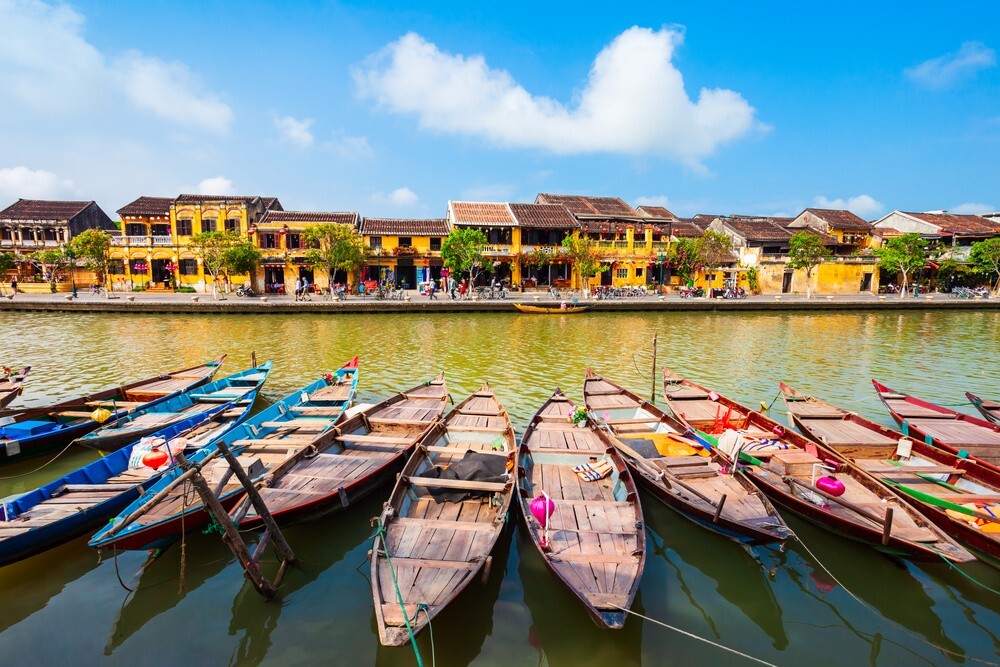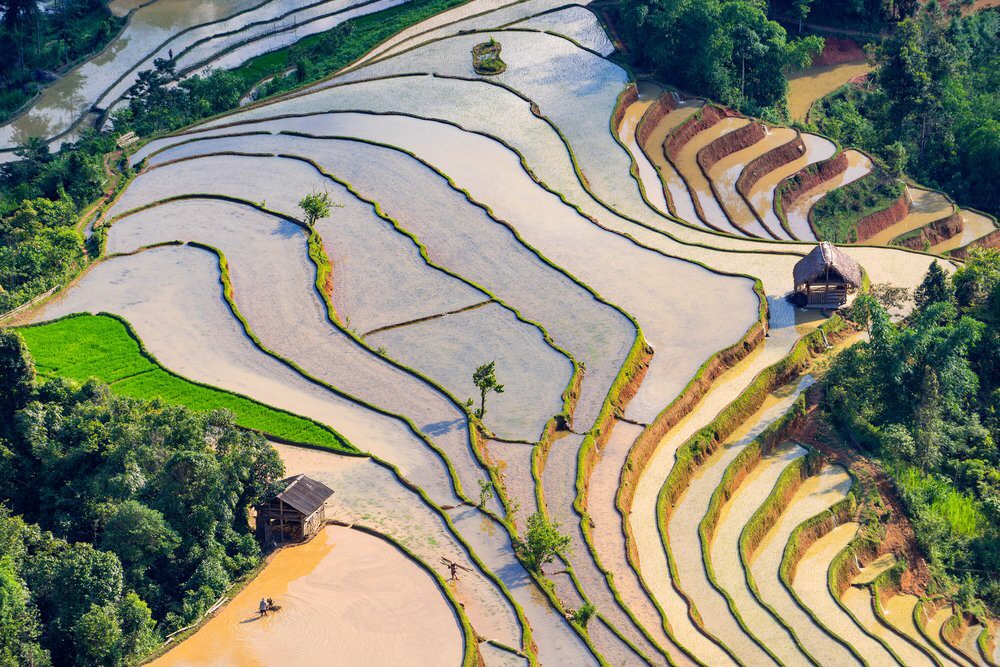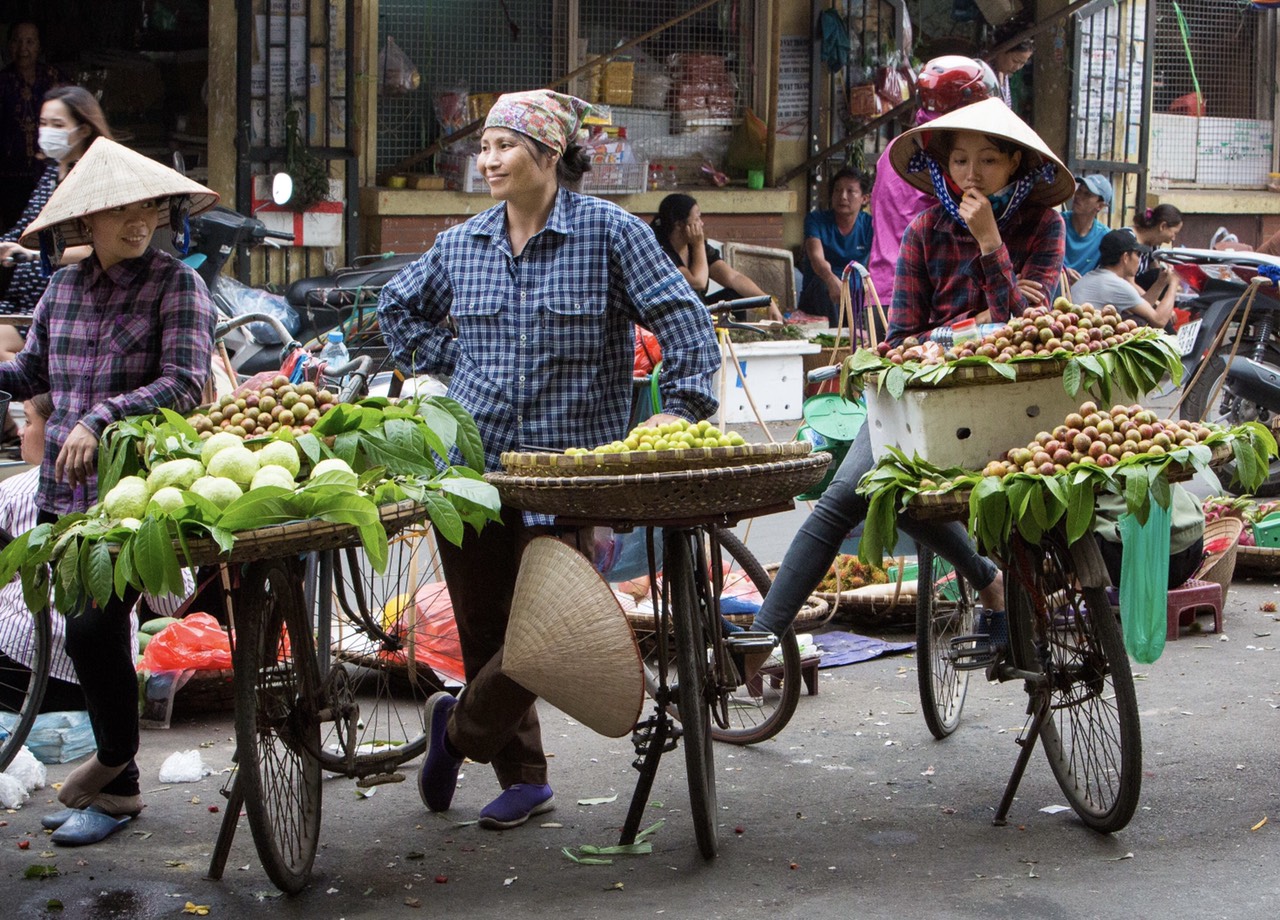
The thousand-year-old city of Hanoi was originally formed by a citadel, the place of imperial power, and the merchant quarter, the district of 36 streets and corporations.
Walking through the small streets, past the busy traffic, getting lost in the stalls and tasting the local food is already a great experience in the old town.
1. History of the Hanoi Old Town Quarter
The old quarter is a district located in the heart of Hanoi, dating from the 15th century, it adjoins the edge of the lake of the restored sword called Hoan Kiem Lake.
Under the Le Dynasty, the area included several lakes and wetlands, the largest of which was Thai Cuc Lake. These lakes, as well as the To Lich River were joined with Hoan Kiem Lake and the Red River. Towards the end of the 19th century, these lakes and rivers were isolated from each other by filling in and diking along the Red River for the great works undertaken by the French. Only one lake was preserved in the old center, the Hoan Kiem Lake.
During the Ly and Tran dynasties, many people migrated to the city. They settled in what is now the old quarter.
During the Le Dynasty period, Chinese immigrants arrived to trade, creating several Chinese neighborhoods.
When the French ruled Vietnam they partially rebuilt the district. This period saw many French and Indians settle there to do business. Two small markets were replaced by the large Dong Xuan Market. A tramway was built through the district.
The old quarter is still the commercial heart of the city.
2. What to do in Hanoi old quarter ?
Visit Hanoi – a city with a thousand years of history. Between the monuments, the buildings, the nature and the numerous possible activities, tourists get lost and end up not seeing much before leaving. To avoid this type of situation and to help those who visit Hanoi for the first time, we propose you a selection of attractions in the old quarter and its surroundings that you should not miss.
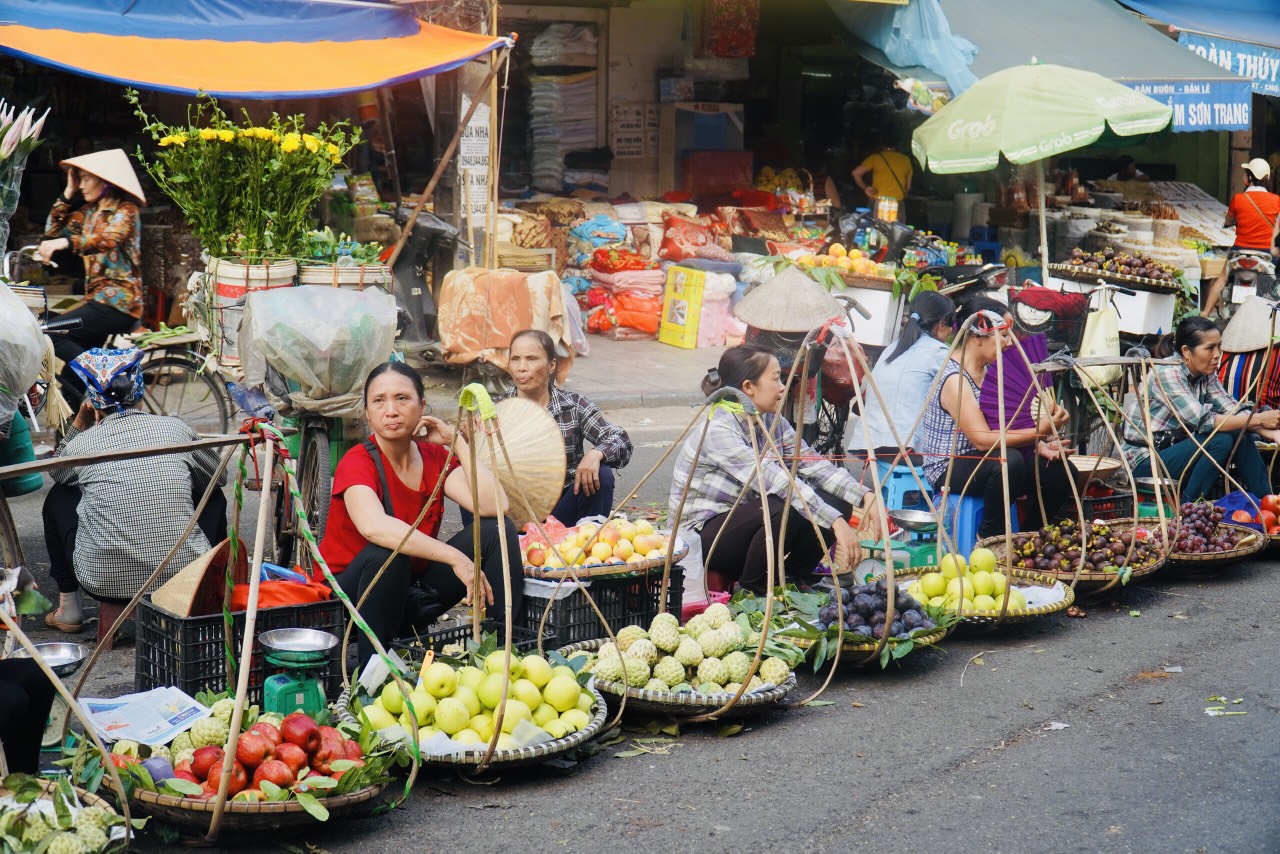
-
OLD QUARTERS STREET
The “district of the 36 guilds” rich of more than 40 streets or lanes dedicated to the trades, it is a living museum in the open air, with an undeniable charm.
Each street of the district represented a trade, a speciality, some of them have kept their specificity. In the old quarter, the merchants are sometimes themselves craftsmen.
Here is a brief summary of the street names :
Lan Ông : medicine street
This is one of the few streets in Hanoi’s Old Quarter where the traditional craft has been preserved with more than 70 establishments specializing in traditional medicine and the trade of remedies.
Hang Be: street of rafts
When Hang Be Street was still part of the Red River embankment, wooden and bamboo rafts and household furniture were sold there.
Hang Bo: street of baskets
Hang Bo Street used to be a famous address for its bamboo woven products, you can now find shoes and incense sticks.
Hang Bong : cotton street
Hang Bong is a rather long street where mainly fashion stores gather: clothes, shoes, etc…
Hang Buom : street of sails
From the end of the 19th century, Hang Buom Street became a shopping and restaurant street.
Hang But: street of brushes
In the past it was a small street where paper, notebooks, brushes, or pens were sold.
Hang Ca : fish street
When the Red River was not yet filled, a lot of fish was raised here. Hang Ca has become a fresh fish market.
Hang Can : scales street
Traditional Vietnamese iron and copper scales used to be sold in this street. Now, a wide variety of products are sold here, including scales.
Hang Chai : bottle street
Here the working poor lived by selling used bottles.
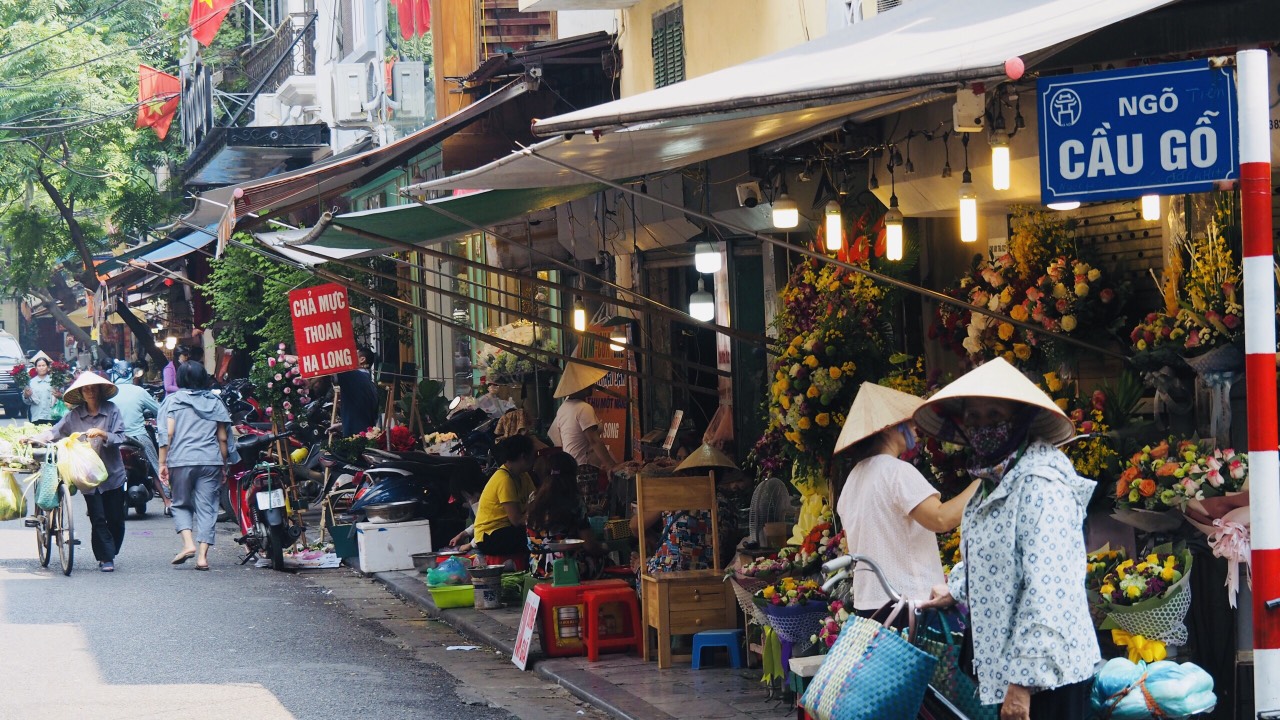
Hang Chi : thread street
A small street where they used to sell weaving threads. Now it is a street where you will find small restaurants.
Hang Chieu : street of mats
Rush mats were the most popular goods sold there. Ceramic bowls have appeared on the shelves in recent years.
Hang Chinh : street of pots
It was a street of trade of jars, large vases, pots, most of which were made of ceramic.
Hang Cot : bamboo trellis street
Bamboo mats are sold there.
Hang Da : leather street
A street that has long been known as an address for the production and sale of cow and buffalo tanned leather. It is also home to the large Hang Da market.
Hang Dao : silk street
Main street and characteristic of the 36 old streets of Hanoi. The street is specialized in silk and dyes. The street becomes pedestrian to welcome the night market of Hanoi.
Hang Dau : oil street
Street where vegetable oils (peanut, sesame, etc…) were sold for cooking and lighting oil lamps.
Hang Dieu : pipe street
Those who wanted to buy pipes or cigarettes went to rue Hang Dieu. Leather goods were also sold there.
Hang Duong : sugar street
One of the most important streets, which is located near Hoan Kiem Lake. A beautiful place for fans of sweets, there are food products such as candied apricots and other delicacies.
Hang Ga : chicken street
A quiet street, different from the other streets in the old part of Hanoi. Before, it was the poultry market.
Hang Gai : hemp street
One of the oldest streets in Hanoi, it is impossible to miss this street, especially for those who love silk, it sells silk scarves, silk clothes, etc.
Hang Giay : paper and shoes street
The origin of its name comes from the time when leather shoes and paper were sold there. The stores have been replaced by gourmet restaurants and food stores.
Hang Hanh : onion street
It’s a nice street where you’ll find restaurants, cafes and the best vermicelli soup in town.
Hang Hom : street of the boxes
In the past, the inhabitants of the street sold the wooden crates that were used to hold the water. Now, you will find stores selling various products.
Hang Huong: street of incense
There are not many stores selling incense now.
Hang Khay : Trays Street
A very beautiful street, just next to Hoan Kiem Lake, which gathers a lot of souvenir stores, paintings, decoration. If you arrive in Hanoi, you should arrive at Hoan Kiem lake and of course, you will pass by Hang Khay street.
Hang Khoai: street of sweet potatoes
Today, you will find in Hang Khoai stores selling vegetables, vases and bowls.
Hang Luoc : street of combs
Traditional and interesting activities take place in this street, it is the street of the flower market, which is organized every year before the Tet festival.
Hang Ma: street of votive papers
Here, we sell votive objects made of paper of various shapes, all of them are made of paper and intended to be burned as an offering to the deceased.

Hang Mam : street of fish in vinegar
This is the street where they used to sell fish sauce with vinegar, now they sell steles, tombs, earthenware or terracotta products.
Hang Manh: street of bamboo blinds
Bamboo curtains and blinds are sold here. You will find another specialty, but culinary this time: the “bun cha”.
Hang Muoi : salt street
A name that no longer corresponds to the reality of the street and no longer offers any particular interest.
Hang Ngang : Cantonese street
A perfect place for those who want to buy paintings, decorative objects, or high fashion clothes.
The house number 48 of Hang Ngang Street is a historical place where the Vietnamese leader Ho Chi Minh wrote the declaration of freedom of Vietnam in 1945.
Hang No: Hat Street
It is a charming street, in which large decorative canvas panels, beautiful clogs for women and window furniture are sold.
Hang Phen : old market street
An old small street in which you will find grocery stores.
Hang Quat: fan street
A typical street of the old district of Hanoi, here one sells fans of old style, wooden furniture, decorative panels of fabric.
Hang Ruoi : street of worms
White worms are sold here, you can taste them in the restaurants, which offer various dishes. Hang Ruoi is also the street of florists.
Hang Than: charcoal street
You will be able to taste specialities such as banh com (rice and mung bean delicacy), banh su Kem (cream puff), etc…
Hang Thiec: Tinsmiths street
Street where pewter products are sold. Once in the street, you will hear the sound of the craftsmen’s hammers. One of the few streets that has kept its traditional aspect and that still sells the same products as in the past.
Hang Thung : barrels street
The street of fashion, restaurants. Ba Hong is a famous restaurant of Nem Chua with rind and pork.
Hang Tre : bamboo street
A small street that today gathers restaurants and hotels.
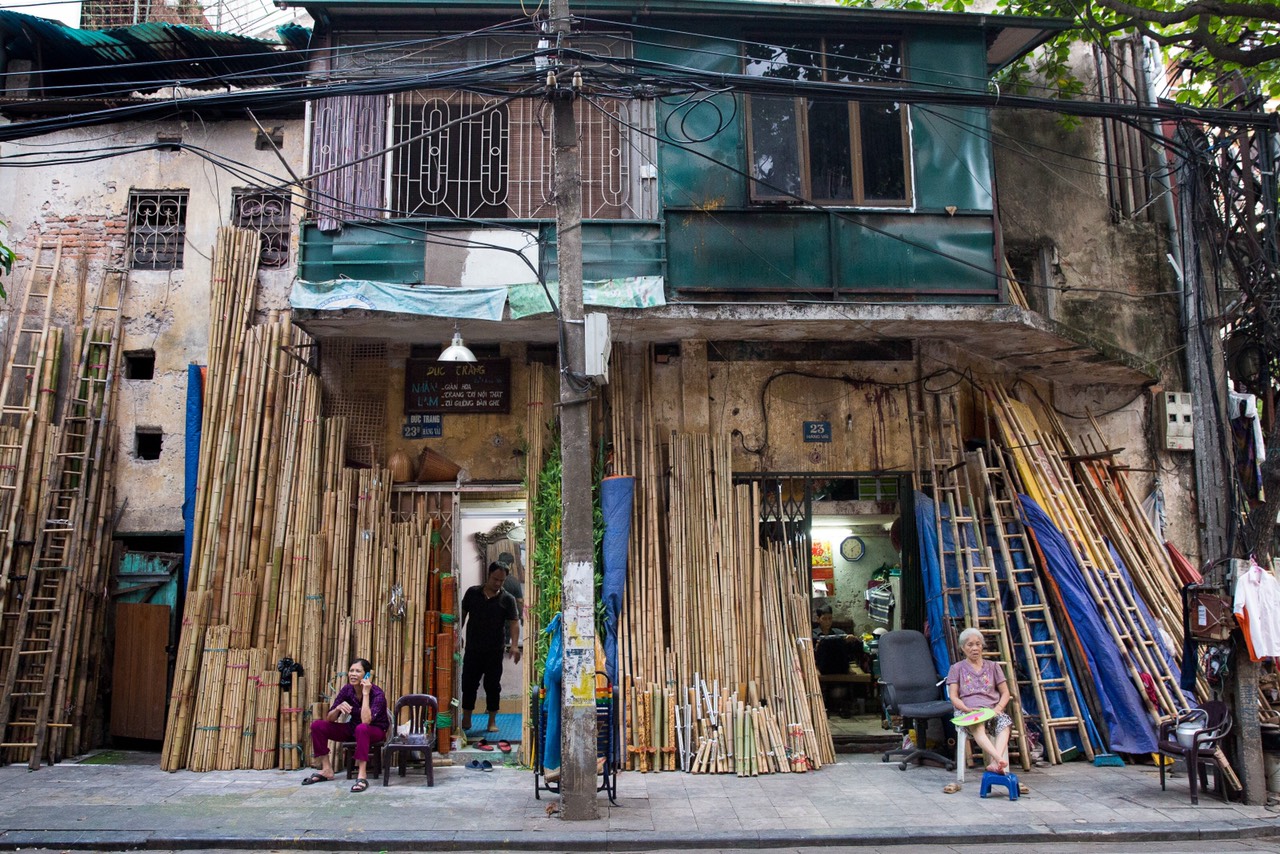
Hang Trong: street of drums
Street famous nowadays for its stores selling paintings and reproductions.
Hang Vai : street of fabrics
The street is very easy to recognize with its ladders and bamboo sticks.
-
TUBE HOUSES – SPECIFICITY OF THE OLD DISTRICT
A walk in the old district allows to feel the old Vietnamese life.
In the 18th century, the district was formed, the craftsmen of the villages of trades which are in periphery install stalls of fortunes, in edge of street and by congregations, to sell their products – At the end of XIX at the beginning of XX century these constructions of fortune of bamboo and straw disappear with the profit of small houses out of hard of two three floors and deep (the first houses tubes), covered with tiles, such the Ma May house. Hanoi then resembled what Hoi An is nowadays.
Between 1902 and 1953, the colonists made this city the capital of French Indochina, Hue remaining the Imperial Capital until 1945. The French considerably modified the appearance of the city, constructing colonial buildings, bridges (Long Bien), the tramway, restructuring the axes and streets, filling in lakes, and commerce took off.
The demography helping, the flourishing trade, more and more merchants want to settle in the old district, the lack of space and the tax on the building which is calculated on the linear street side, make that the “tube houses” (“nha ong” in Vietnamese) multiply.
This type of house is often found on a narrow plot (2 to 4 meters wide), and of great depth (sometimes of more than 20 meters).
Each house, generally with several floors (sometimes 6 floors) supported by a narrow base, is divided into different rooms intended for the activities of the family: store, living room, kitchen, room of worship, room…they lost for the majority their tiles with the profit of a terrace roof.
In the Old Quarter, there are 1153 traditional tube houses, 273 of them should be restored.
-
LAKE OF THE RETURNED SWORD – LAKE HOAN KIEM
Located in the center of Hanoi, Hoan Kiem Lake is the symbol of national independence for the Vietnamese. It is also known for its beauty, cultural and historical values.
The lake has had many names such as Luc Thuy, Ta Vong, Huu Vong and Thuy Quan. Its current name Hoan Kiem which means “restored sword” dates back to the 15th century.
According to the legend, King Le Loi, founder of the Le dynasty, received a magic sword from a turtle which allowed him to defend the kingdom against the Chinese invaders. After defeating the Minh (the Chinese), he returned the precious sword he had received earlier to the golden turtle.
In the middle of the lake, the square-shaped Turtle Islet pays homage to the sacred animal.
It takes about 40 minutes to walk around the lake, it is a nice walk. The lake is worth seeing at any time of the day, from sunrise to sunset. The lake lights up around 6 pm.
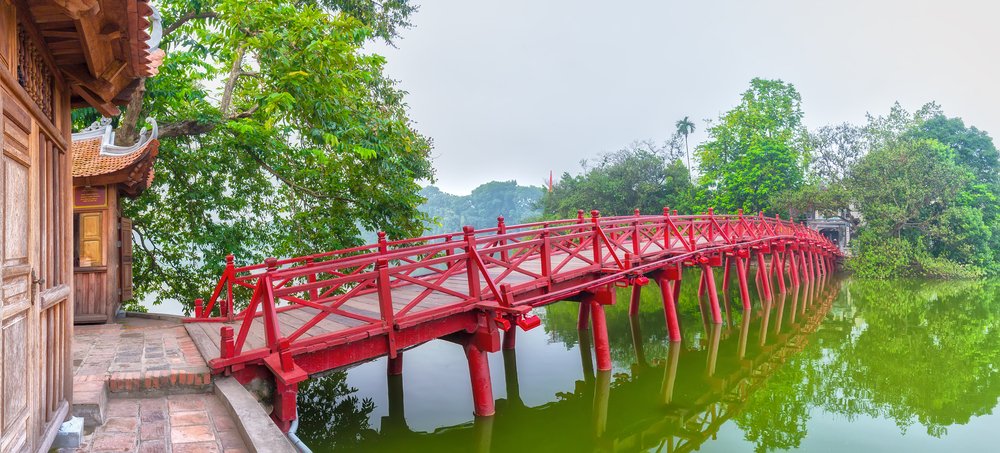
-
NGOC SON TEMPLE – JADE MOUNTAIN TEMPLE
Located in the heart of Hoan Kiem Lake, Ngoc Son Temple is worth a visit to admire the view of the lake, see the temple and the mummified turtle that used to live in the lake.
Built on an islet in the 19th century, Ngoc Son temple is a temple dedicated to the Chinese shrine of Quan Cong, La To, to the scholar Van Xuong and to the general Trân Hung Dao, who defeated the Mongols in the 13th century.
At the entrance of the temple, you will find the Thap But tower (the tower of the brush). It is made of stone and bears three Chinese ideograms meaning “Writing on the blue of the sky”.
The passage on the red lacquer bridge (Sunrise Bridge) is very nice. This bridge is to be used to access Ngoc Son temple.
It is recommended to go there at the end of the afternoon, then wait for the nightfall (around 6 pm), to enjoy the night illuminations. In the evening, the lights of the Sunrise Bridge are reflected in the water, creating a magical show.
This place is quite romantic, lively and colorful.
Entrance fee : 30.000 VND /pax.
-
MAMAY ANCIENT HOUSE
Built at the end of the 19th century, the house at 87 Ma May Street shows the structure of Vietnamese housing.
Ma May Street was called “Rue des Pavillons Noirs” during the French colonial period. It was one of the busiest streets in the old quarter.
Ma May’s house has been inhabited by several generations of merchants (the first ones were herbalists). The house has recently undergone a complete renovation with the help of the Toulouse region in France.
The house is characteristic of early tube houses with three successive buildings interspersed with courtyards that allowed air and light to enter.
The first floor with a large space (a living room) for guests, a space with a skylight and in the backyard the kitchen, sanitary facilities and a storage area.
On the second floor you will find the bedroom and dining room with the ancestor altar on the street side. The Vietnamese honor their ancestors by putting flowers, fruits and incense sticks on the altar.
At the back of the second floor, there is a huge veranda where the children of the house used to play.
Today, the house is an ideal place to organize cultural events and artistic exhibitions (Ca Tru songs – songs of courtesans).
Opening hours: 8h30-12h00 / 14h00-17h30
Entrance fee : 10 000 VND /pax.
-
DONG XUAN MARKET
At the end of the 19th century, the French had the To Lich River drained and filled in to densify the district. In 1889, they replaced the old markets in a new structure: the Dong Xuan market. This market is also called the Grand Marché by the French, it is one of the largest and oldest markets in Hanoi.
The market building has five vaulted roofs, the covered area is about 6,500 square meters. In July 1994, the market was almost completely destroyed by a fire. After the fire, the market was rebuilt between 1994 and 1996.
It is a typical place where you can dive into the atmosphere of Vietnamese markets. In Dong Xuan market, it is possible to find absolutely everything you are looking for.
Every Friday, Saturday and Sunday evening, a night market is held in the surrounding streets. On this occasion, do not hesitate to taste the traditional North Vietnamese dishes.
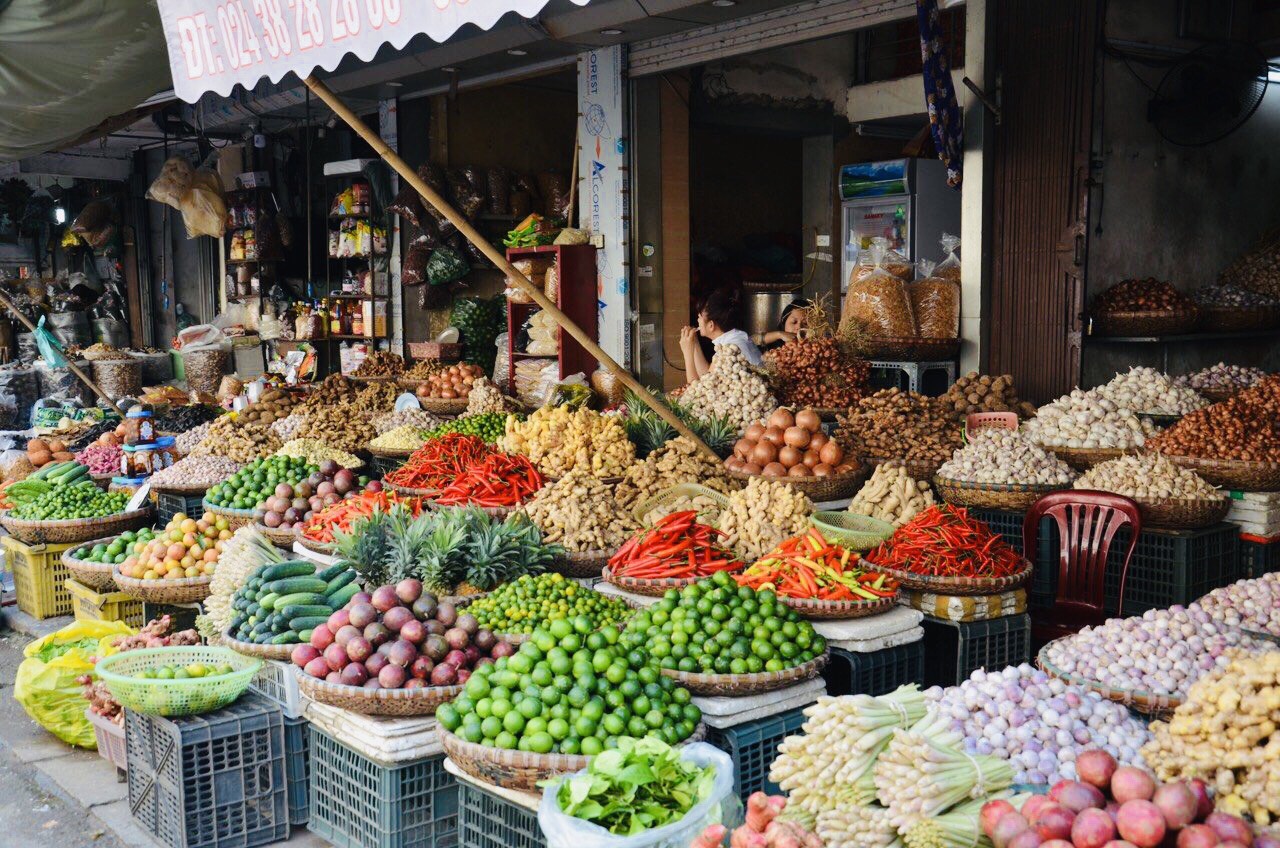
-
HANOI OLD QUARTER NIGHT MARKET
Every weekend, from Friday to Sunday, from Hang Dao Street towards Dong Xuan Market, there is an Old Quarter Night Market starting at 7pm. It is a great opportunity to stroll around the city center, eat, bring back some souvenirs and make some unforgettable encounters.
The market is about 3 km long (from Hong Dao to Dong Xuan). It consists of more than hundreds of stalls of small traders selling fresh food, clothes, accessories, souvenirs and handicrafts. All the sidewalks are used by street vendors on foot or by bicycle.
Come and stroll through the alleys of this night market to spend a pleasant and friendly moment.
-
LONG BIEN BRIDGE
Built by the French company Dayde et Pillé from 1898 to 1902, the Long Bien Bridge is considered the oldest bridge in Hanoi. This metal structure was named Paul Doumer, in honor of the Governor General of Indochina Paul Doumer.
This bridge is 2290 meters long and has 19 spans made of steel beams. During the wars, this bridge suffered irreparable damage. The American bombings damaged the central structure of the bridge, but the Vietnamese rebuilt the road.
Nowadays, the Long Bien bridge allows trains, pedestrians, bicycles and scooters to cross the river but cars are forbidden.
A bit long to cross on foot, but you will have a very nice view on the Red River and Hanoi. Halfway across, you can go down to the banana island for a view from below, or enjoy roasted sweet potatoes, tea, roasted corn,… on the sides of the bridge.
-
HANOI OPERA HOUSE
Located in the heart of Hanoi, near Hoan Kiem Lake, dating back to the French colonial era, the Hanoi Opera House is one of the most famous architectural symbols of Vietnam.
Inspired by the architecture of the Garnier Opera House in Paris, it was completed in 1911 and became a beautiful building left by the French.
Hanoi Opera House has three main areas: the main hall, the hall of mirrors and the auditorium. First, the main hall is the first place where guests are welcomed into the theater. Second, the Hall of Mirrors often hosts important ceremonies, press conferences and artistic programs. Finally, the auditorium is the most important space in the Opera House, seating up to 870 people. Its ceiling is richly decorated with elegant paintings by French artists. On the walls, copper lamps add to the beauty of the place. At the back, there are 18 dressing rooms, 2 rehearsal rooms, offices, library and meeting room.
During your stay in Hanoi, we highly recommend you to attend a show or a performance that takes place there.
Lang Toi, My Village: a superb show in which the poetic beauty of village life in northern Vietnam is presented through the approach of Vietnamese bamboo circus.
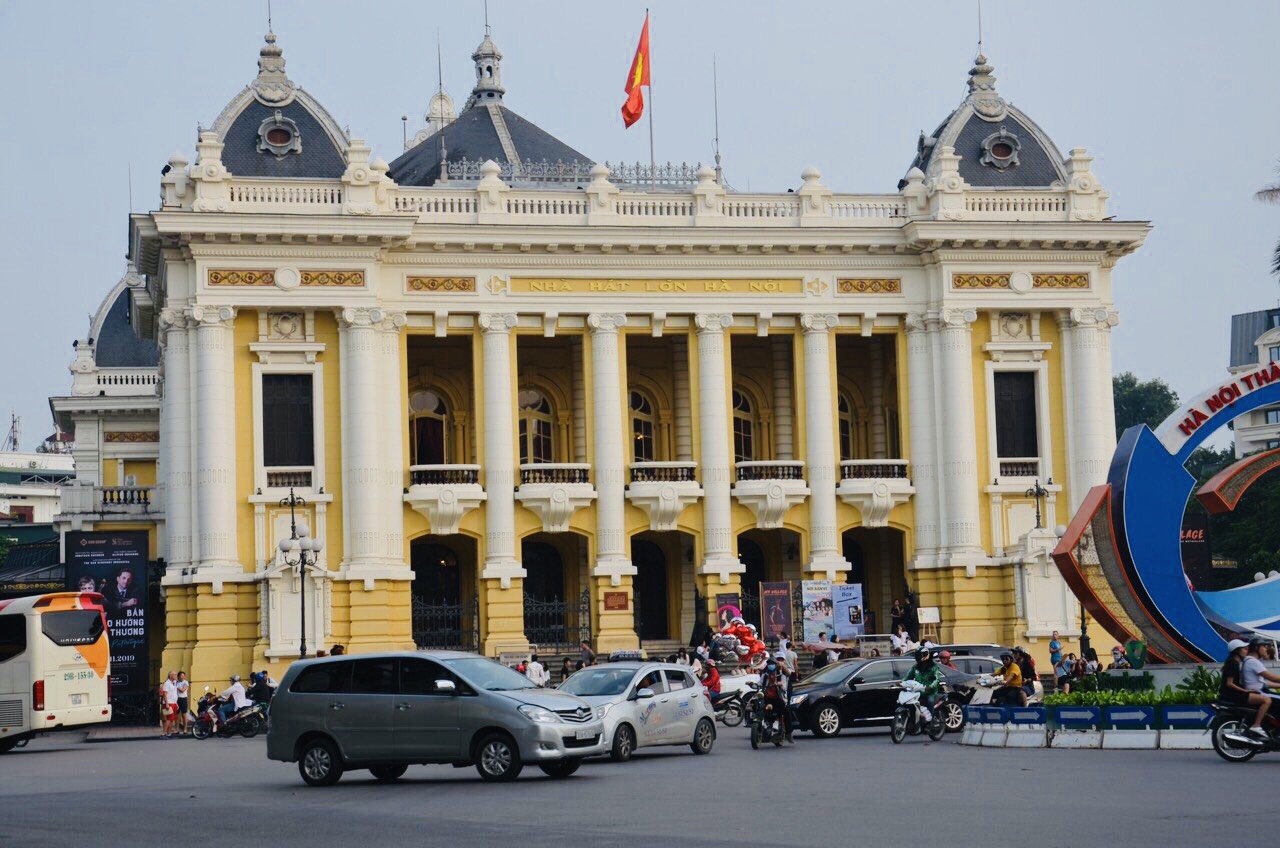
-
SAINT JOSEPH’S CATHEDRAL IN HANOI
Located in the old quarter of Hanoi, it is easy to visit the St. Joseph Cathedral which is part of the French-Vietnamese history.
St. Joseph’s Cathedral of Hanoi (or Hanoi Cathedral) was consecrated during the Christmas mass in 1886.
It was built under the episcopacy of Bishop Puginier in the style then in vogue in France of neo-Gothic revival. It is reminiscent of Notre Dame de Paris.
It was built on the site of the old Bao Thien pagoda which dated from the 11th century.
The cathedral is 64 meters long, 20 meters wide and its two towers reach 31.5 meters. Its massive two-tower entrance, stained glass windows and interior furnishings are worth a look.
The cathedral surrounded by its garden is very pleasant. There is a mass in French at 11 am on Sunday.
-
WATER PUPPETRY
Water puppetry (mua roi nuoc) is a unique and magical art created by Vietnamese peasants. Recognized as early as 1121, this art was born in the villages of the Red River Delta region in northern Vietnam.
The little dolls tell the daily life, work and games of the villagers. Literally, “mua” means “dance”, “king” means “puppet” and “nuoc” means “water”. In general, a puppet measures about 40 centimeters and is composed of two parts: the “body” which floats on water and the “support” under water which maintains the balance of the puppet.
Water puppets have always been a well known show for tourists.
In Hanoi, near Hoan Kiem Lake, there are two theaters that offer daily puppet shows on water: The Thang Long Water Puppet Theater and The Bong Sen Water Puppet Theater.
Thang Long water puppet theater
Address: 57B Dinh Tien Hoang, Hoan Kiem, Hanoi
Bong Sen Water Puppet Theater
Address : 16 Le Thai To, Hoan Kiem, Hanoi
Entrance ticket : from 100 000 VND/pax
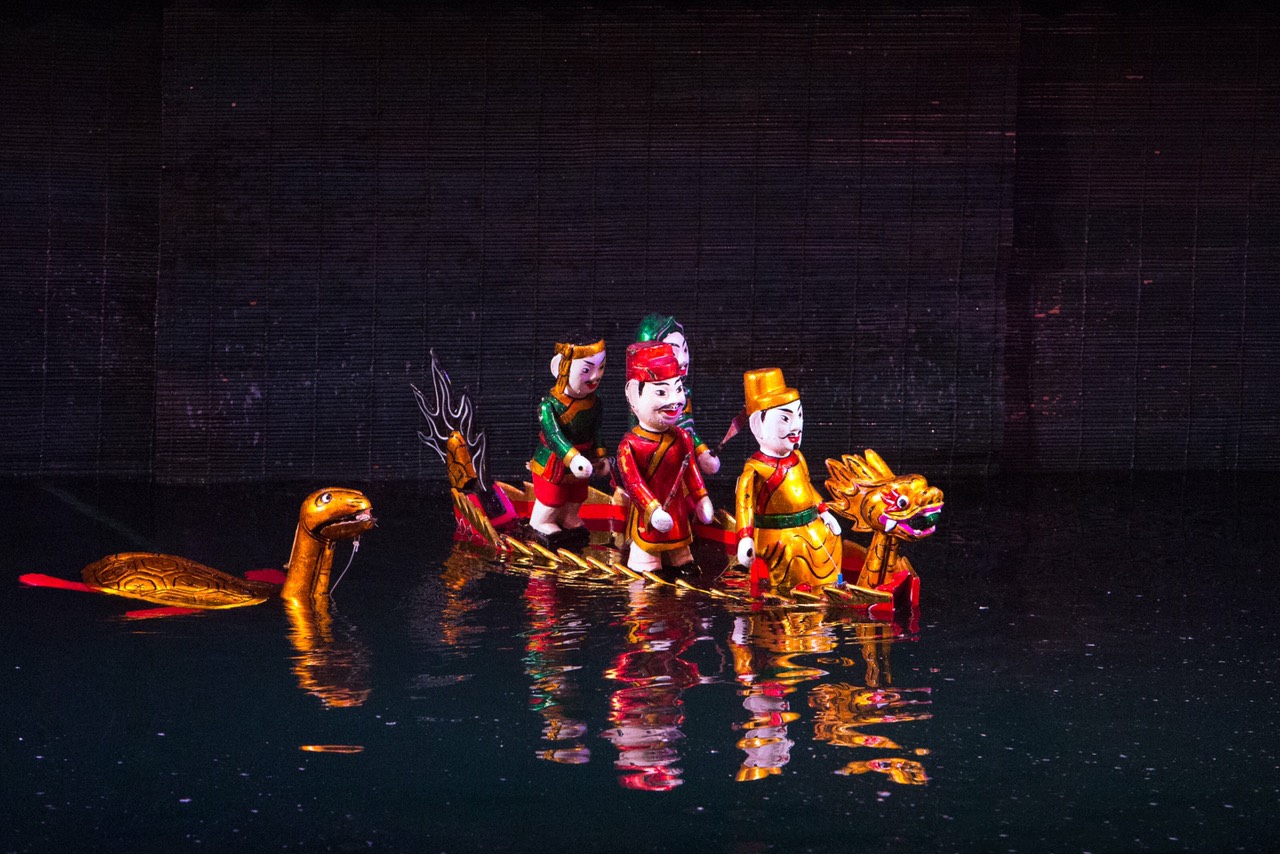
3. Gastronomic activities in Hanoi
STREER FOOD IN HANOI
Between the restaurant and home cooking, there is street food. In Vietnam, as in many other Asian countries, street food fully meets the needs of locals and tourists. In the old city of Hanoi, you just have to move around to find a good dish.
You will be able to evaluate the popularity of the restaurant by looking at the number of people you will see inside or in front of it, waiting in line.
Plus, you’ll get a chance to see how the food is prepared.
Street food – it’s more than just a meal, it’s always a great way to experience the local life!
Hanoi’s culinary specialties to try :
- Banh goi (Pillow cake)
- Banh tom (crispy shrimp pastry)
- Nem lui (Lemongrass Pork Skewers)
- Cha ca (fish cake)
- Bun rieu cua (crab noodle soup)
- Banh cuon (rolled cake)
- Che (dessert soup or stew, or pudding)…
C’est près du marché Dong Xuan, que vous trouverez une succession de stands pour goûter aux spécialités locales.
COOKING CLASS
If you are interested in Hanoi’s gastronomy, why not learn to prepare typical dishes yourself under the guidance of a Vietnamese chef. This is an opportunity to discover a totally different culture.
Start with a walk in a local market where you will find plenty of fruits, unknown vegetables and all the other fresh ingredients for the cooking class. Then you will be guided to make some of the most famous recipes such as Nems, Pho noodle soup, Bun Cha or egg coffee and even vegetarian dishes according to your desires.
It will be a great experience in itself to have a very pedagogical and passionate local who will explain you the Vietnamese cuisine, the aromatic herbs, the different sauces of the country etc. In a few hours, you will be conquered by the local cuisine, you will then be able to reproduce it at home in order to satisfy your family, your friends.
Here is our selection :
Duong’ Restaurant cooking class
101 Ma Mây, Hoan Kiem, Hanoi
08:30 am – 12:30 am / 14:30 – 18:30
Apron Up Cooking Class
3rd floor, 66 Bat Su, Hoan Kiem, Hanoi
Opening hours: 09:00 – 12:00 / 11:30 – 14:30 / 16:00 – 19:00 / 18:30 – 21:30
Rose Kitchen
294 Kim Ma, Ba Dinh, Hanoi
Opening hours: 09:00 – 13:30 / 15:00 – 19:30
THE BEST DISHES IN THE OLD QUARTER NOT TO BE MISSED
- PHO – VIETNAMESE SOUP
One of the most popular dishes, Pho is a real delicacy that you must try. It is never difficult to find Pho in Vietnam, especially in Hanoi, a Pho full of flavors, good meats, noodles and various herbs that will delight you!
You can find it everywhere in the street.
Address :
Pho Ly Quoc Su – 10 Ly Quoc Su, Hoan Kiem, Ha Noi
Pho Suong – 24B Trung Yen, Dinh Liet, Hoan Kiem, Ha Noi
Pho Bat Dan – 49 Bat Dan, Hoan Kiem, Ha Noi
Pho Thin – 13 Lo Duc, Hoan Kiem, Ha Noi
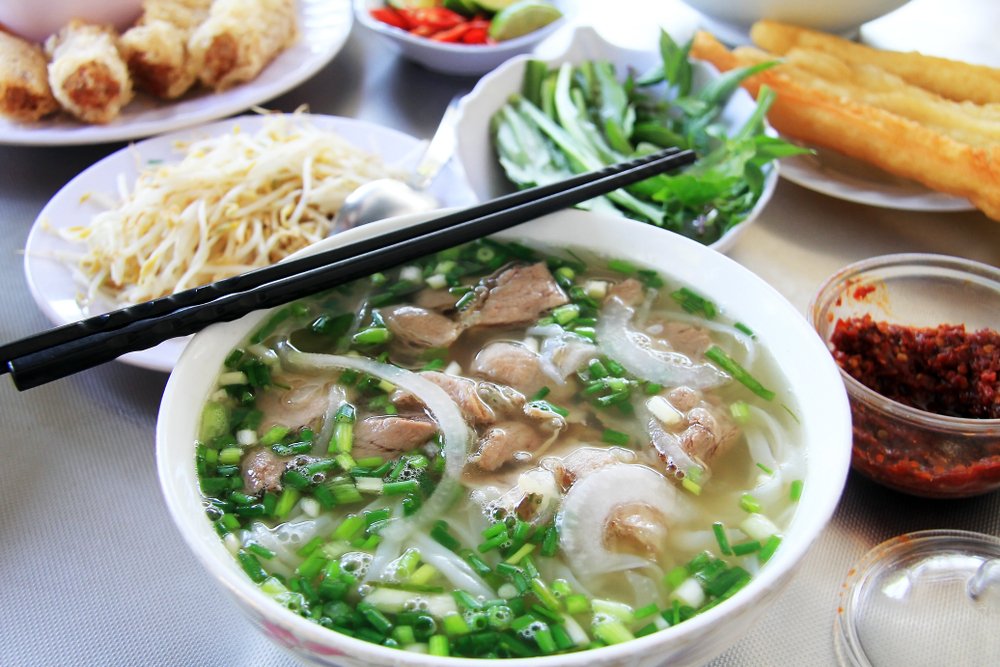
- BUN CHA
One of Hanoi’s signature dishes, Hanoi bun cha is a delicious traditional dish to enjoy. The bun cha is made of grilled pork served on rice vermicelli and a tasty sauce.
Address :
Bun Cha Dac Kim – 1 Hang Manh, Hoan Kiem, Hanoi
Bun Cha Cua Dong – 41 Cua Dong, Hoan Kiem, Hanoi
Bun Cha Tuyet – 34 Hang Than, Ba Dinh, Hanoi
Bun Cha Hang Quat – 74 Hang Quat, Hoan Kiem, Hanoi
- BANH MI
Probably one of the favorite dishes of Vietnamese and increasingly known in the world, the Banh Mi is a true delight that you must absolutely taste.
It is a kind of big sandwich made of bread and filled with vegetables, meat and herbs. It can be eaten on the go at any time!
You can find it everywhere in the street.
Address :
Banh mi Pho co – 38 Dinh Liet, Hoan Kiem, Hanoi
Banh mi Ba Dan– 34 Lo Su, Hoan Kiem, Hanoi
Banh mi Nguyen Sinh – 19 Ly Quoc Su, Hoan Kiem, Hanoi
- EGG COFFEE – CA PHE TRUNG
The egg coffee was born in Hanoi in 1950, made of egg yolks, sugar, condensed milk and coffee. It is undoubtedly one of the drinks not to be missed during your visit in the capital.
According to the original recipe, you need a good amount of condensed milk mixed with egg yolk. Then, you pour the very hot black coffee into a cup and delicately add the frothy egg, which makes like a floating island on the coffee.
A real delight! If you want to have a little coffee after a visit, go there, you won’t regret it.
Address :
Giang Café – 39 Nguyen Huu Huan, Hoan Kiem, Hanoi
Leu Coffee & Bar – 1 Ta Hien, Hoan Kiem, Hanoi
Loading T café – 2e étage, 8 Chan Cam, Hoan Kiem, Hanoi
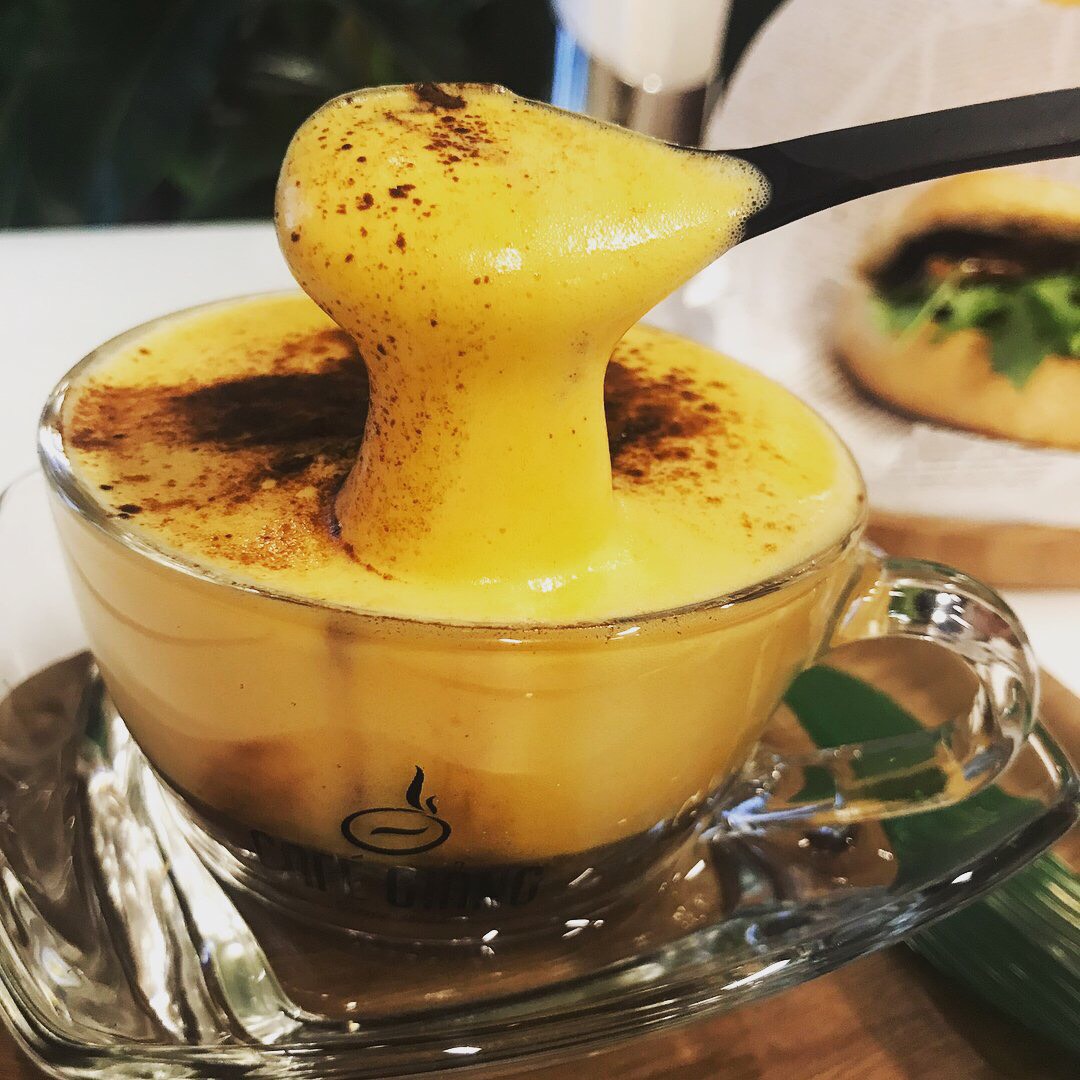
4. Means of transportation to visit Hanoi Old Quarter
The best way to experience the bustling life of Hanoians is to get lost in the Old Quarter of the capital. Take at least half a day for this walking tour to discover many facets of this old city. You’ll find everything from must-see attractions, to food and goods, to cultural activities and lifestyle. If you are worried about getting lost, don’t hesitate to book a guided tour.
One means of transportation in Hanoi that you can’t miss is the pedicab – one of the tourist icons of Vietnam. Imported to Vietnam during the French colonial period, nowadays, it is a pleasant activity to do. A one hour ride on a rickshaw will make you admire ancient monuments, discover small streets, soak up Hanoian life, take nice pictures while staying safe.
Even if the rickshaw is a preferred means of transportation by travelers, the most efficient way to get around Hanoi is by scooter. A tour of this transport accompanied by a local (xé om – motorcycle cab) will be perfect for those who want to taste the street food, see the daily activities and even explore the non-touristy places.
For a complete tour combining street food with the discovery of the streets and remarkable monuments, do not hesitate to contact your agency which will organize for you a day, a half day, guided, on foot or by motorcycle…
Many surprises are waiting for you during the visit of Hanoi’s old quarter !
You might also like:
